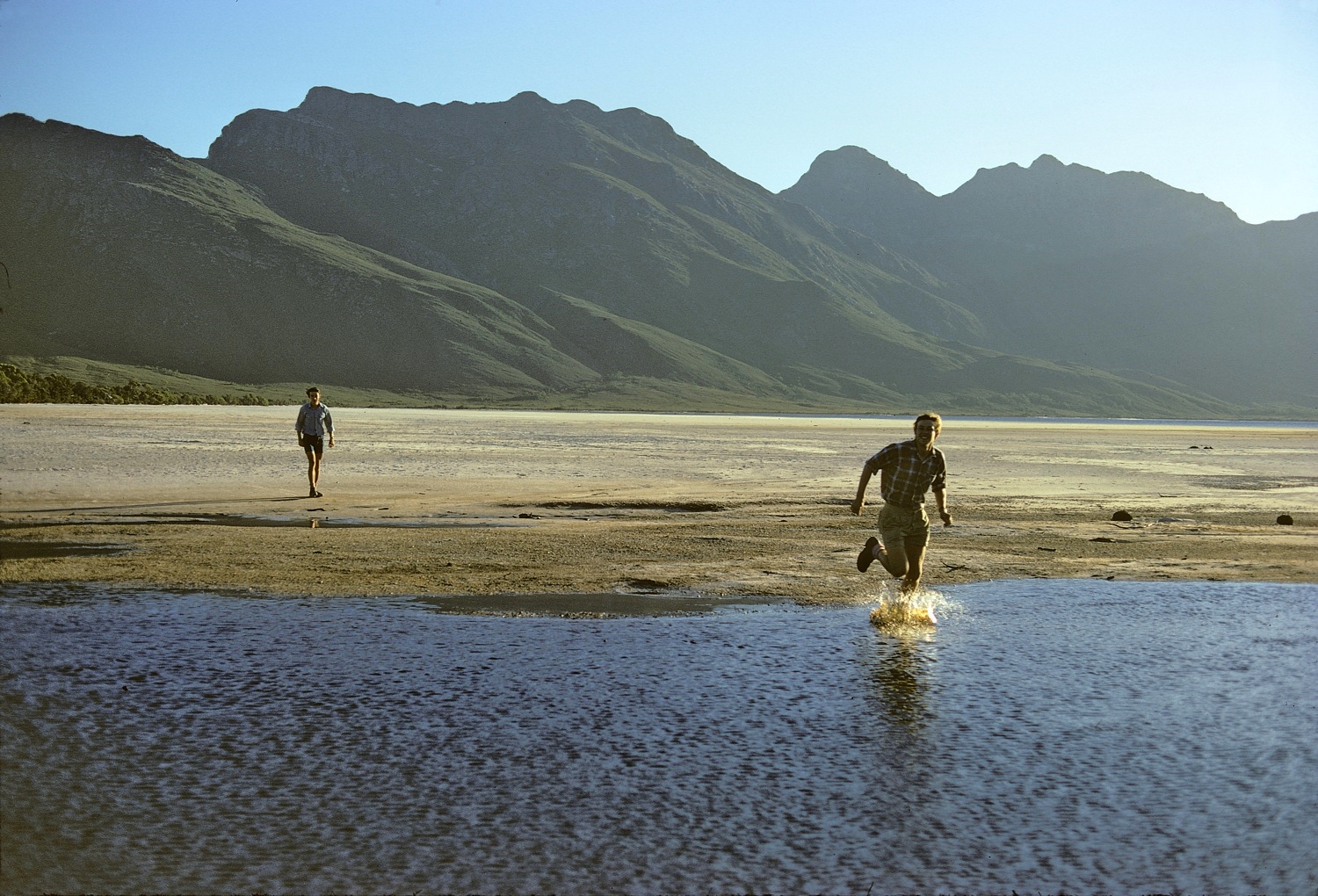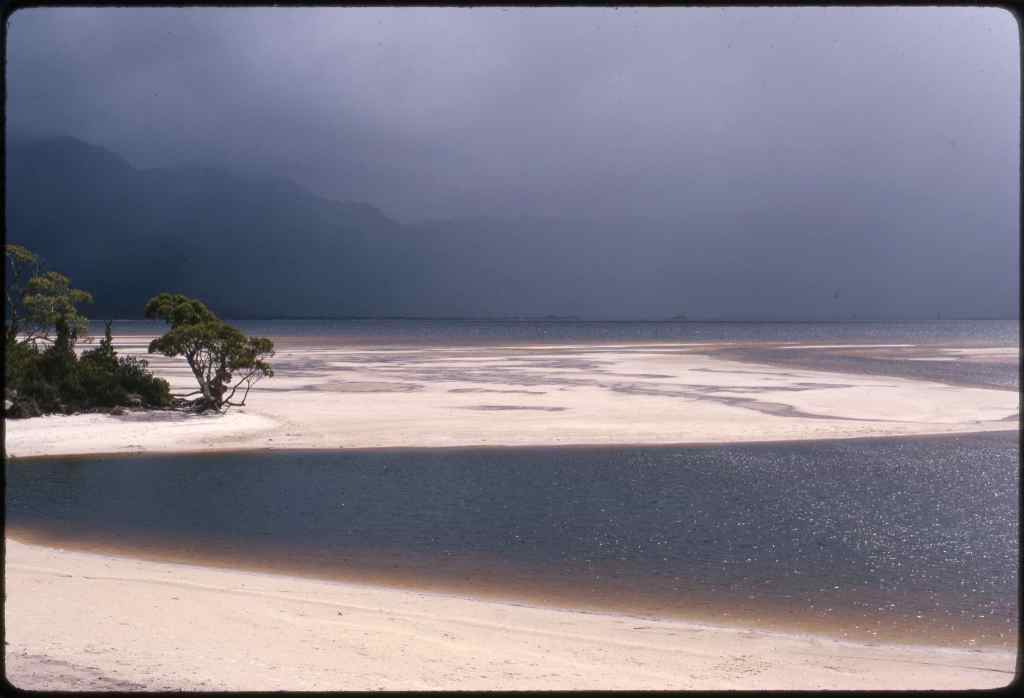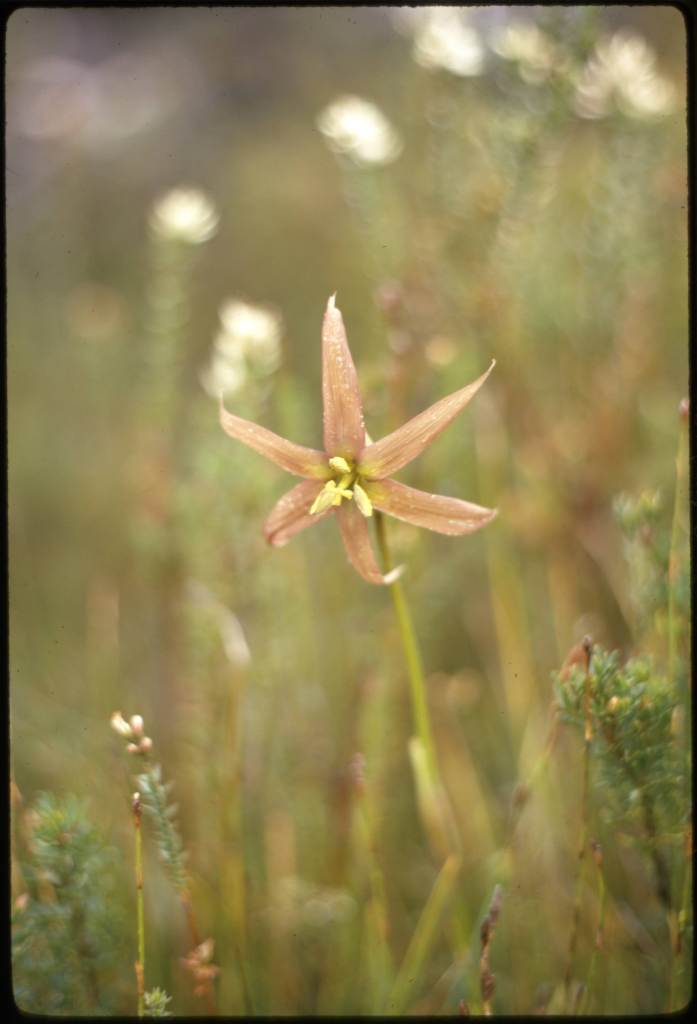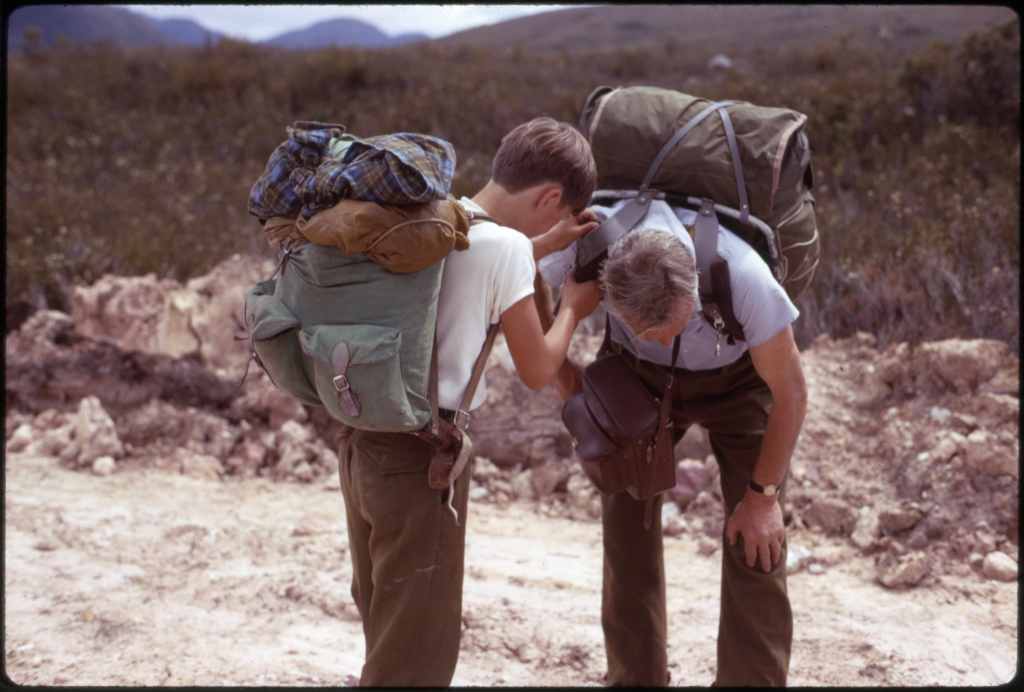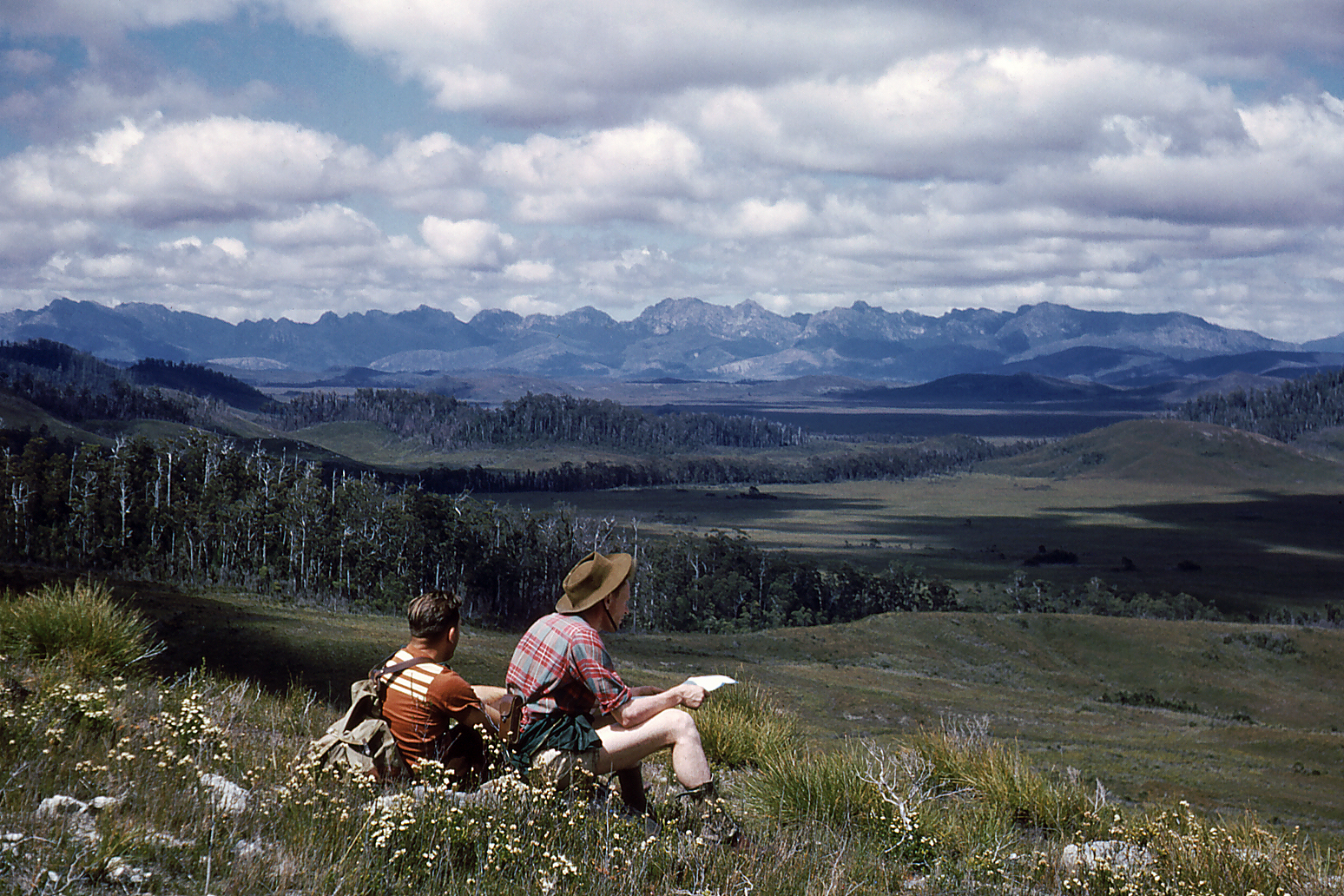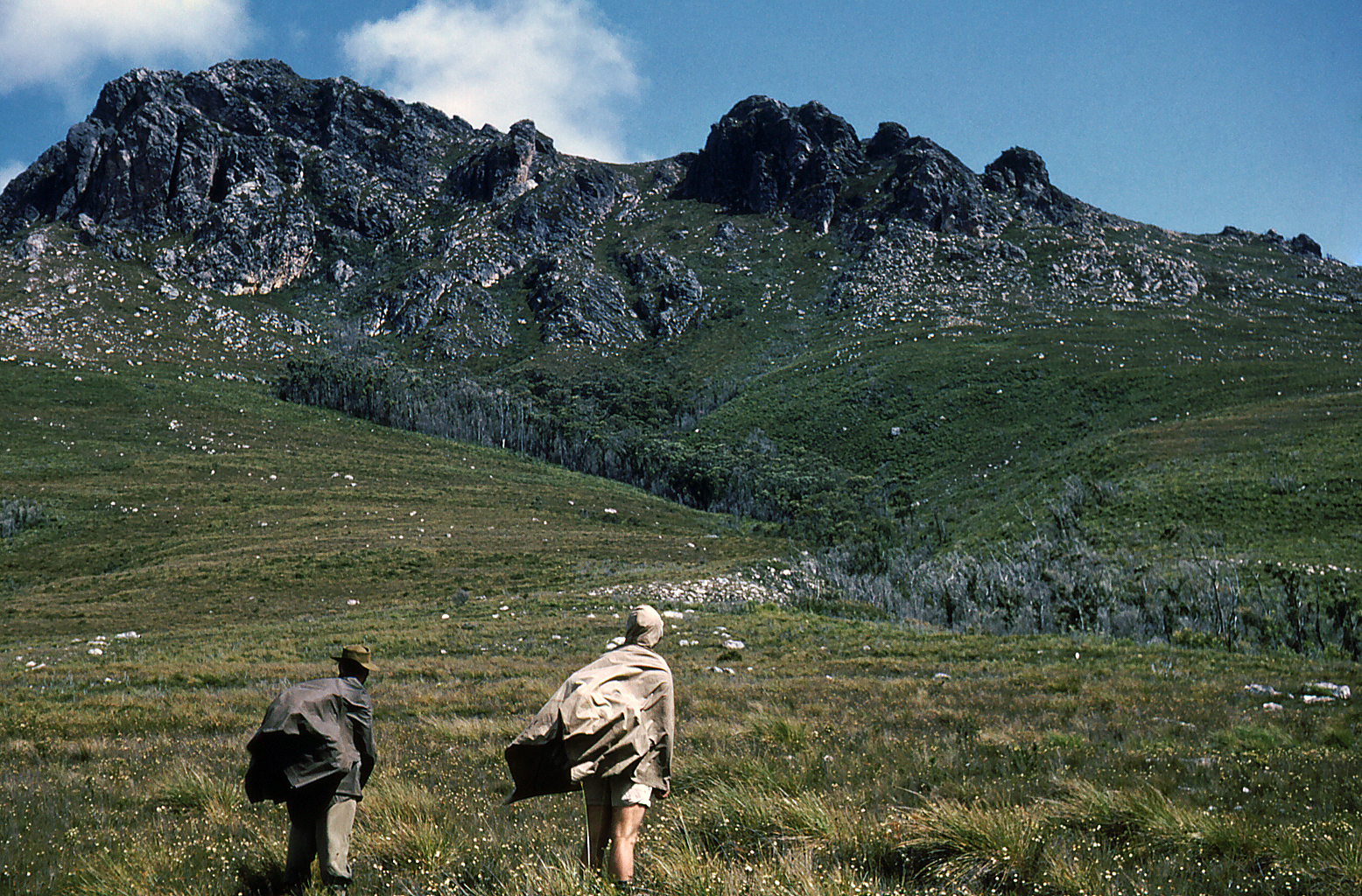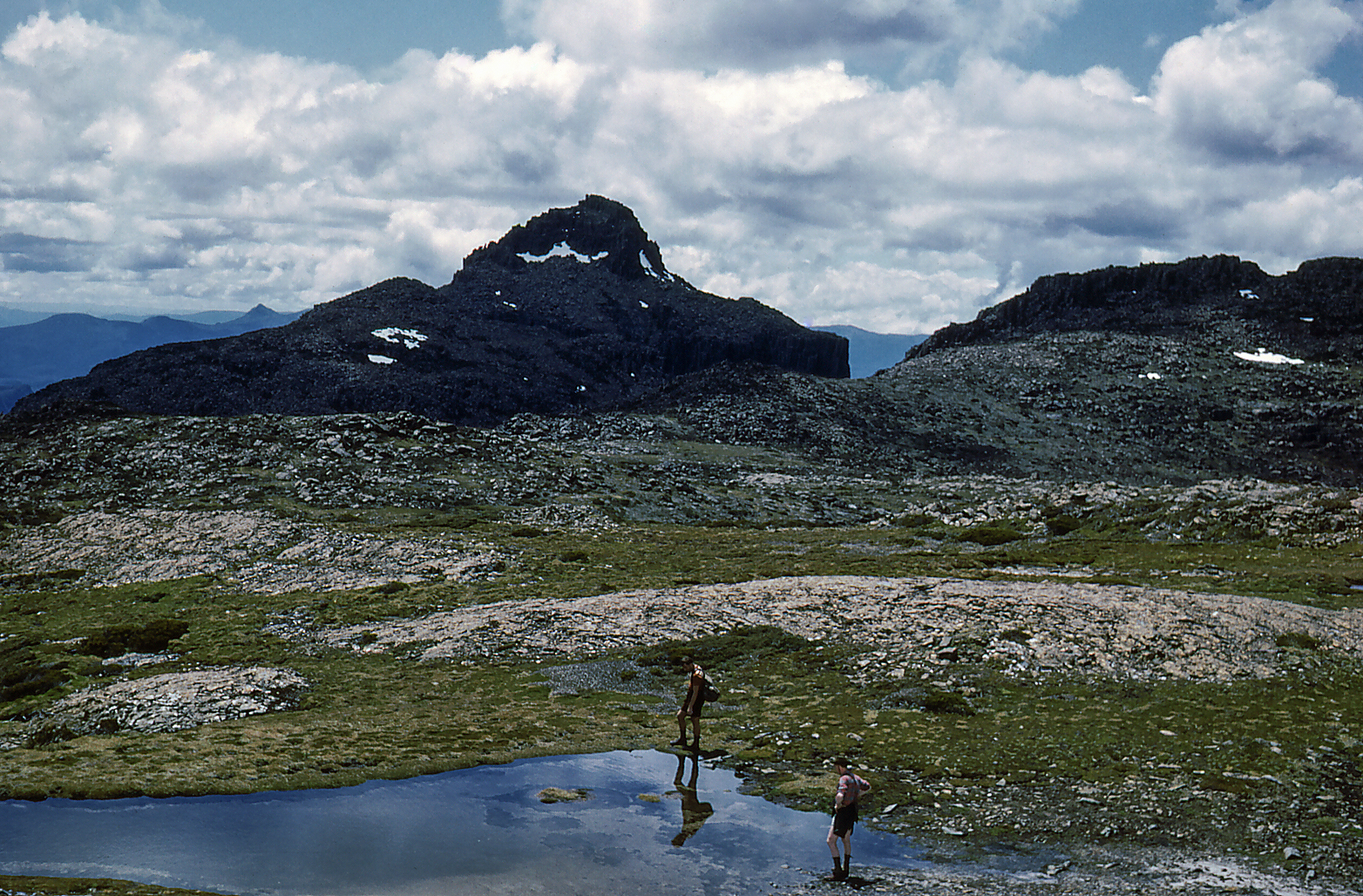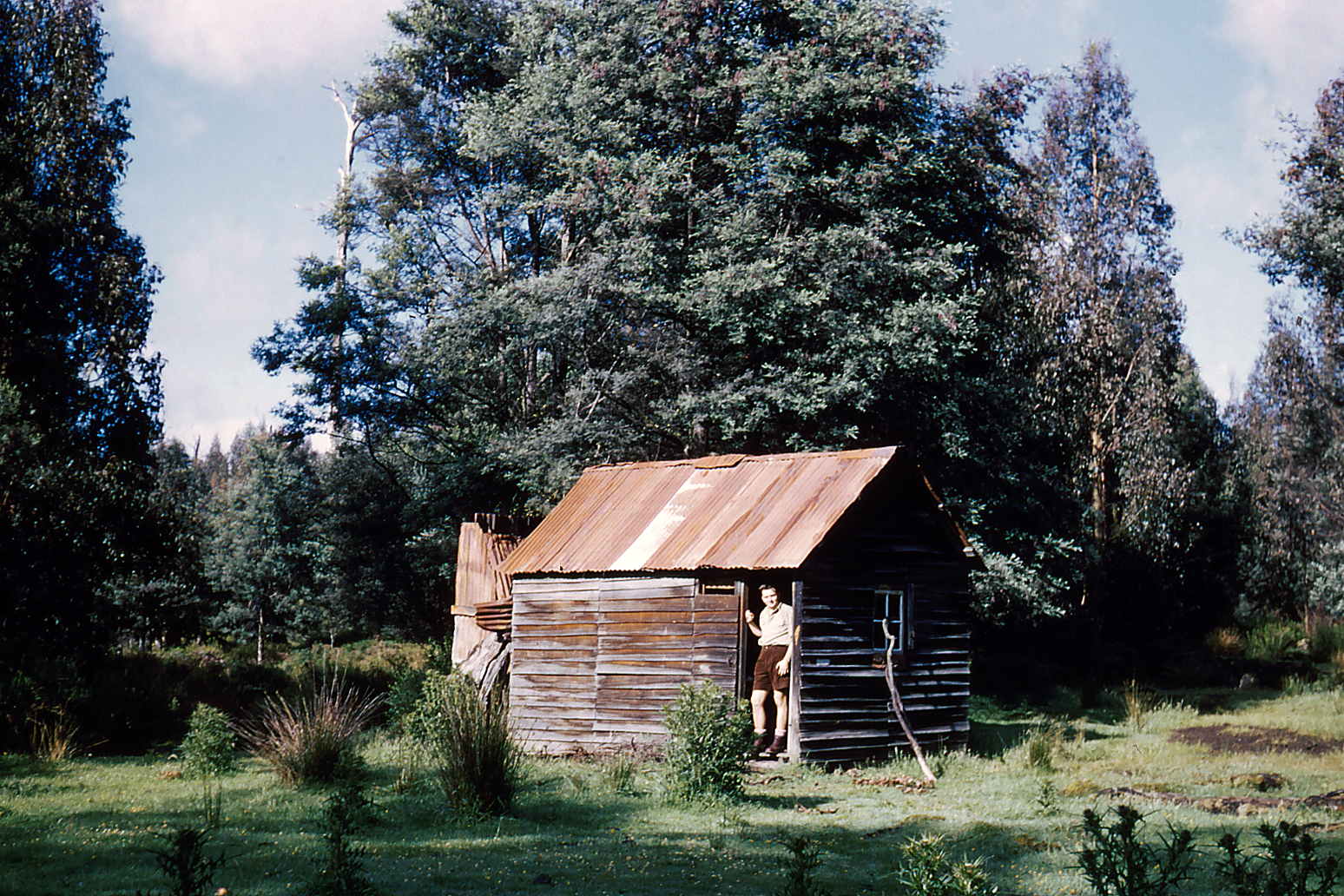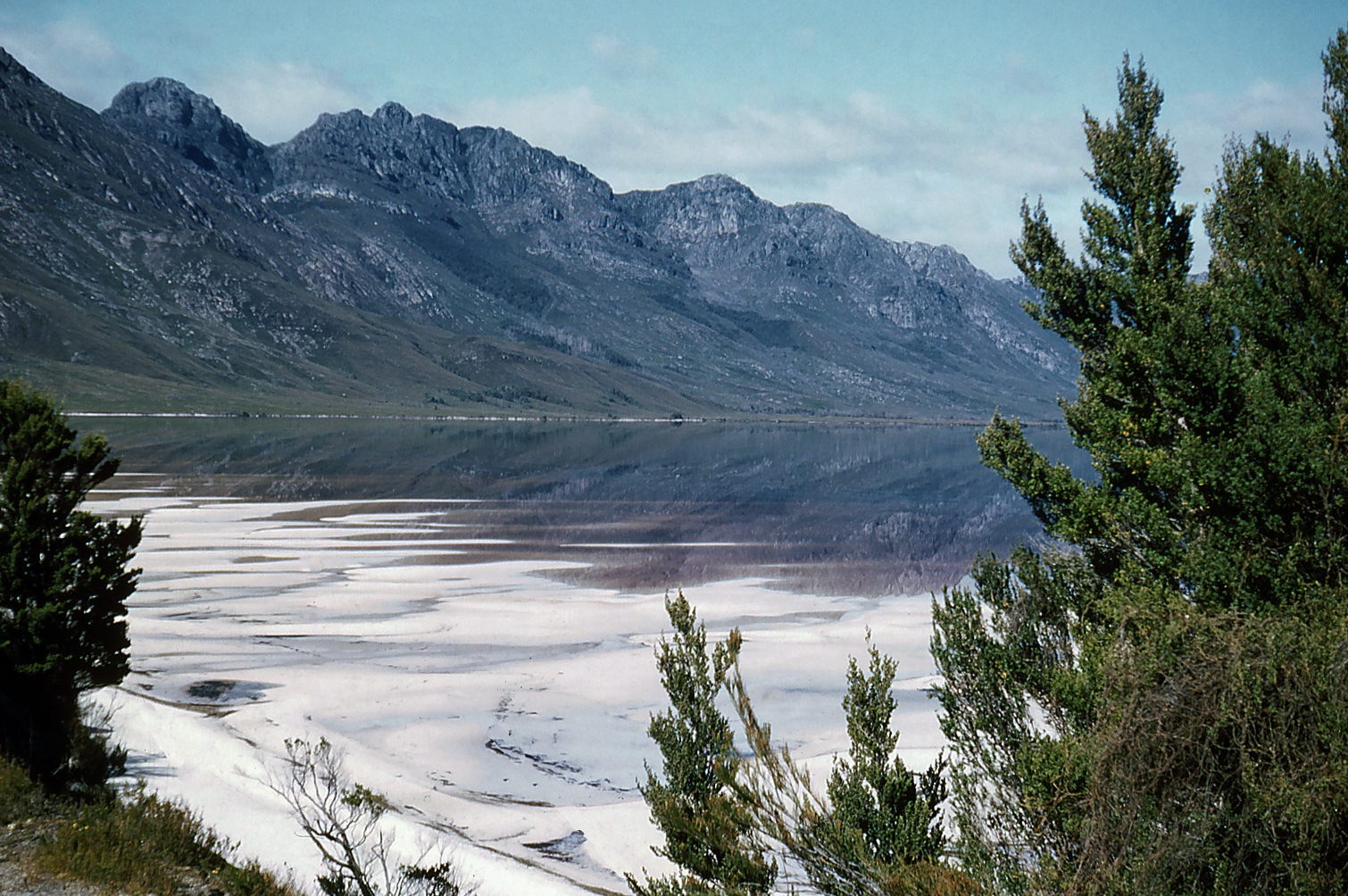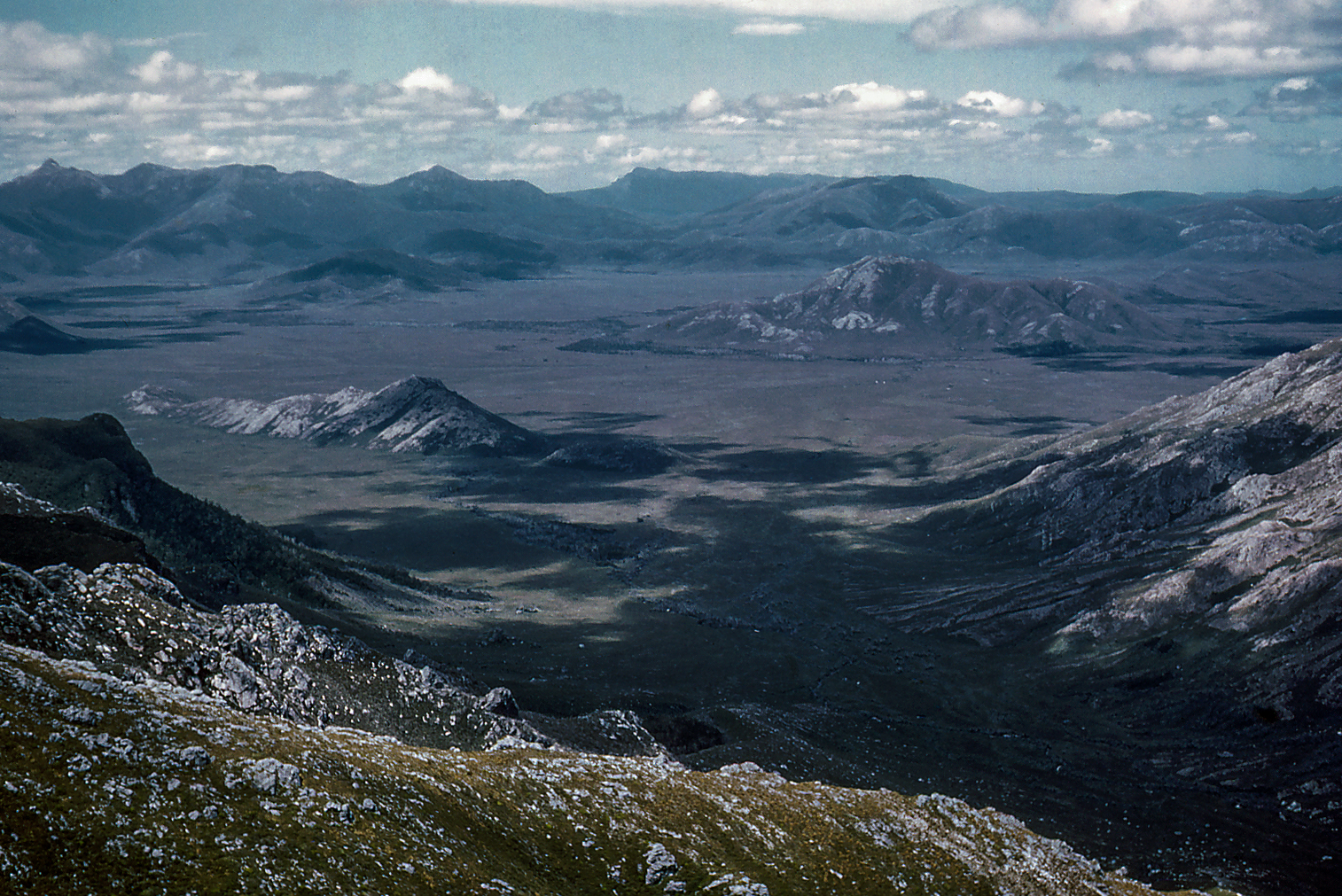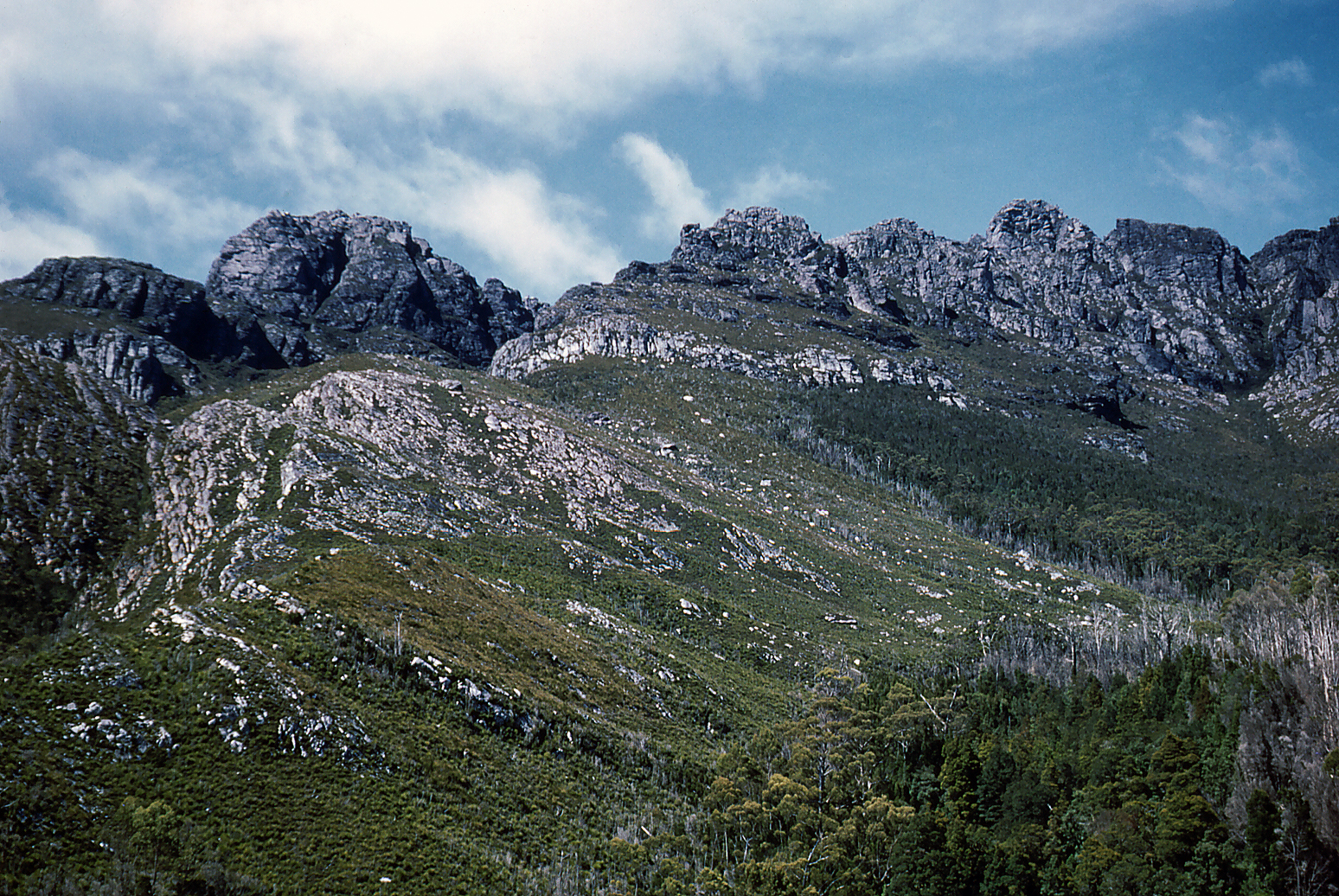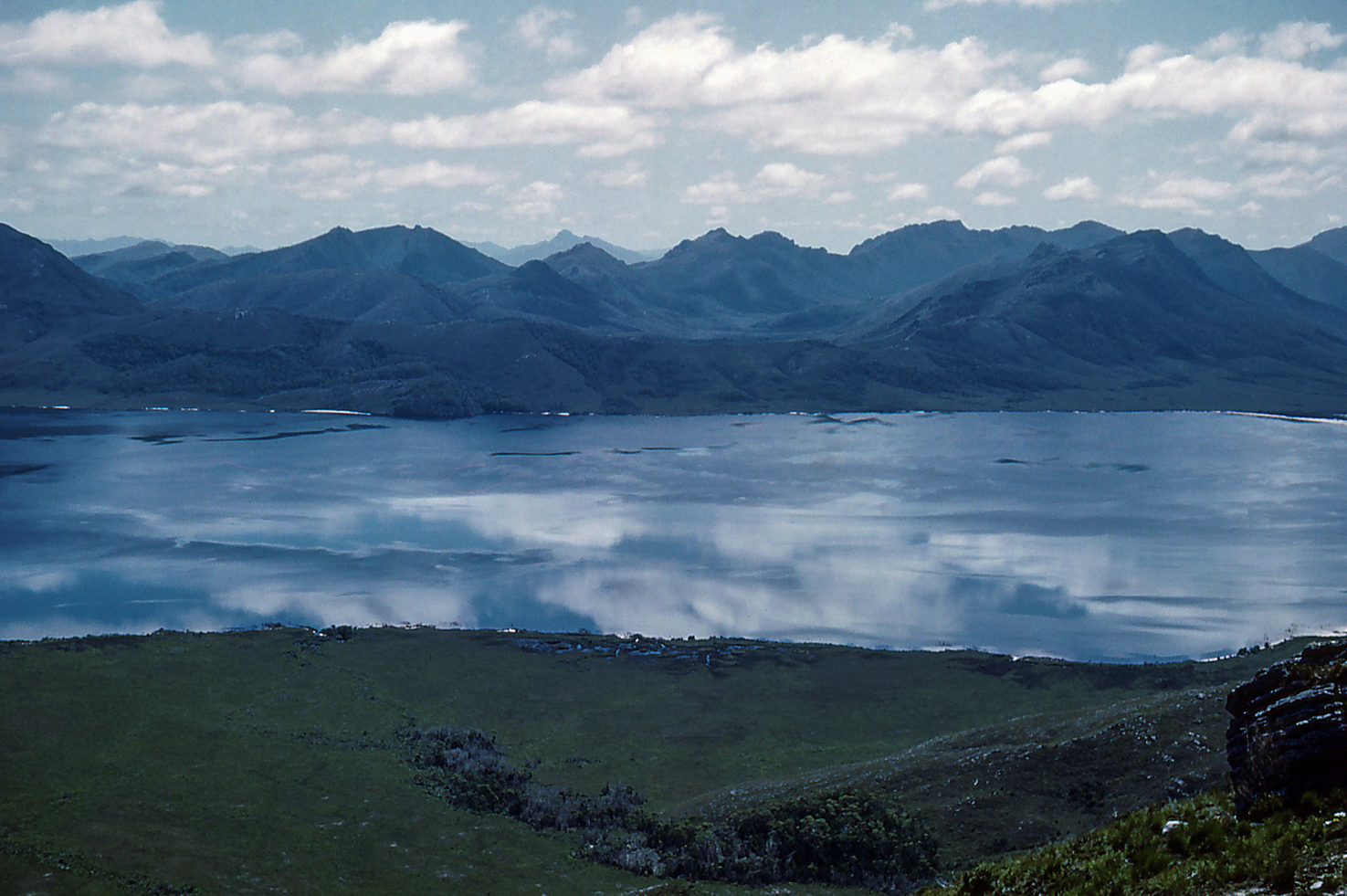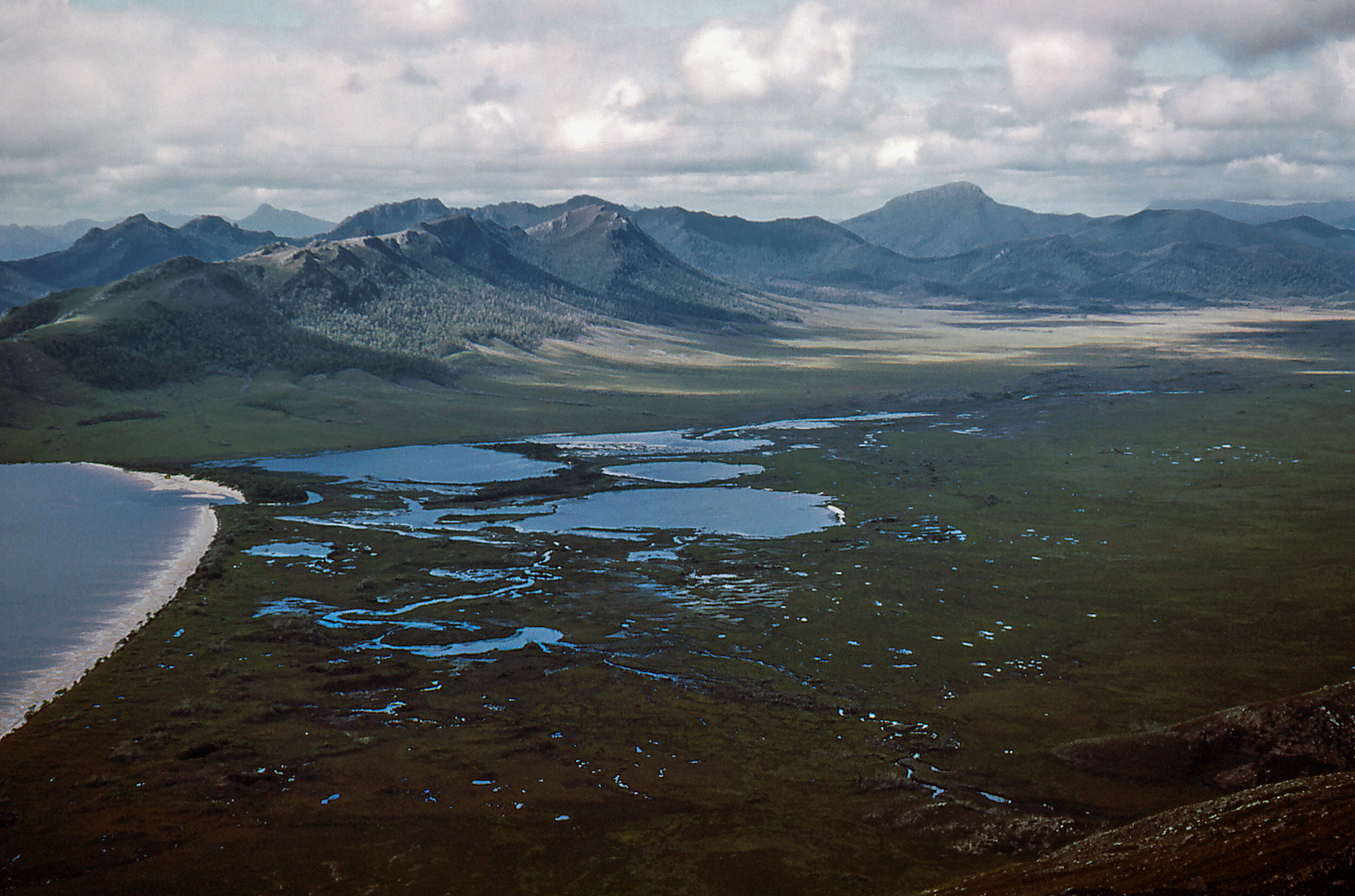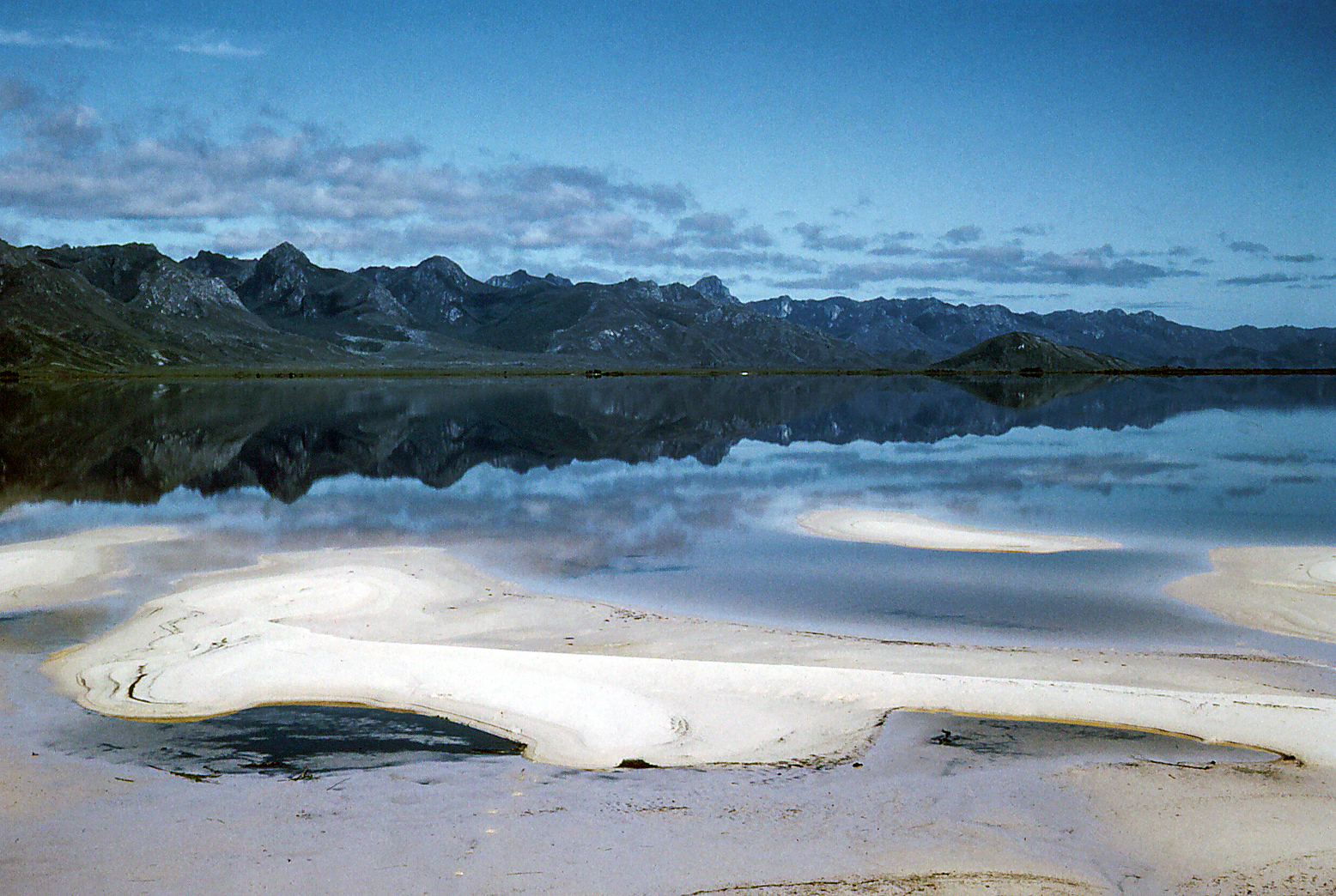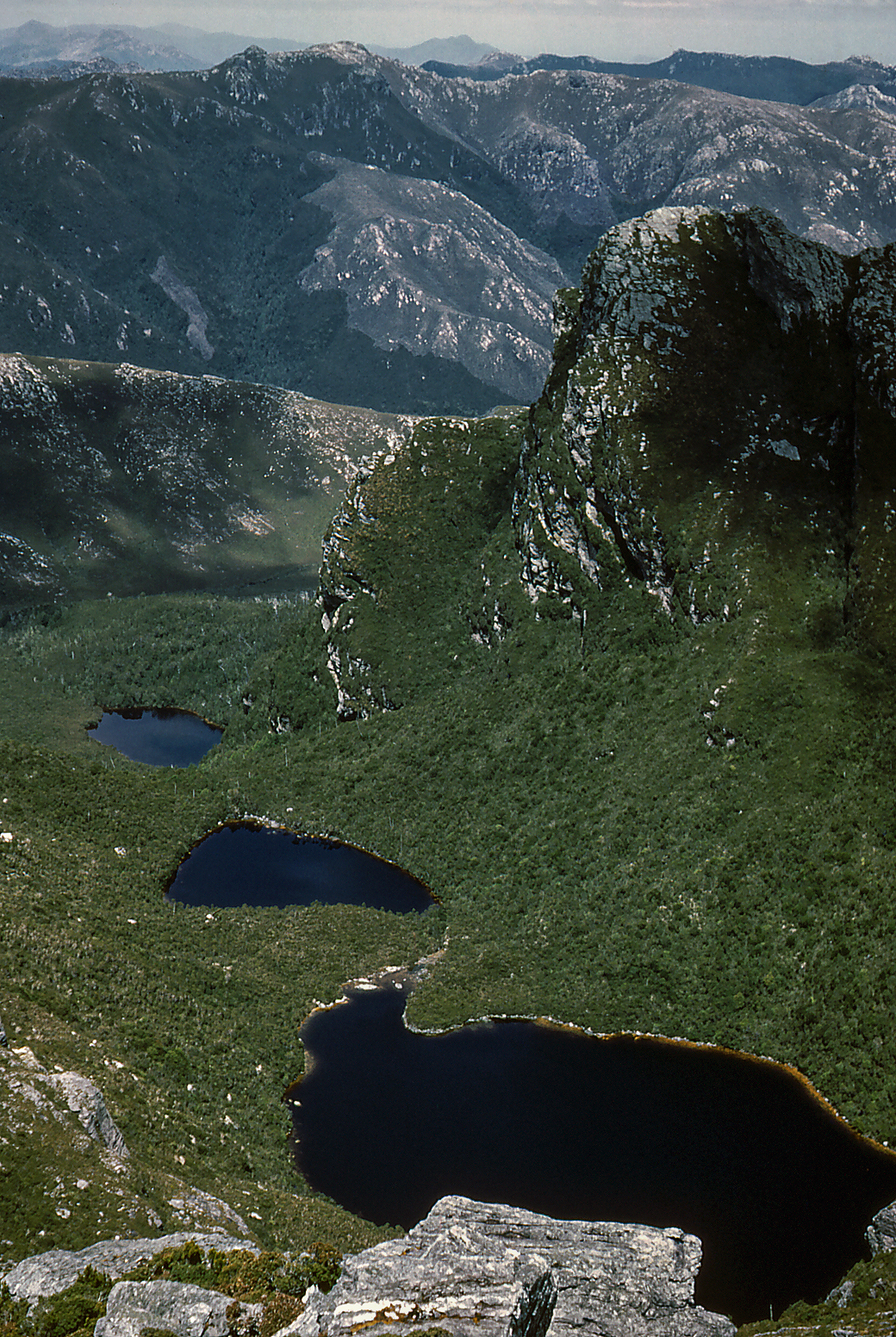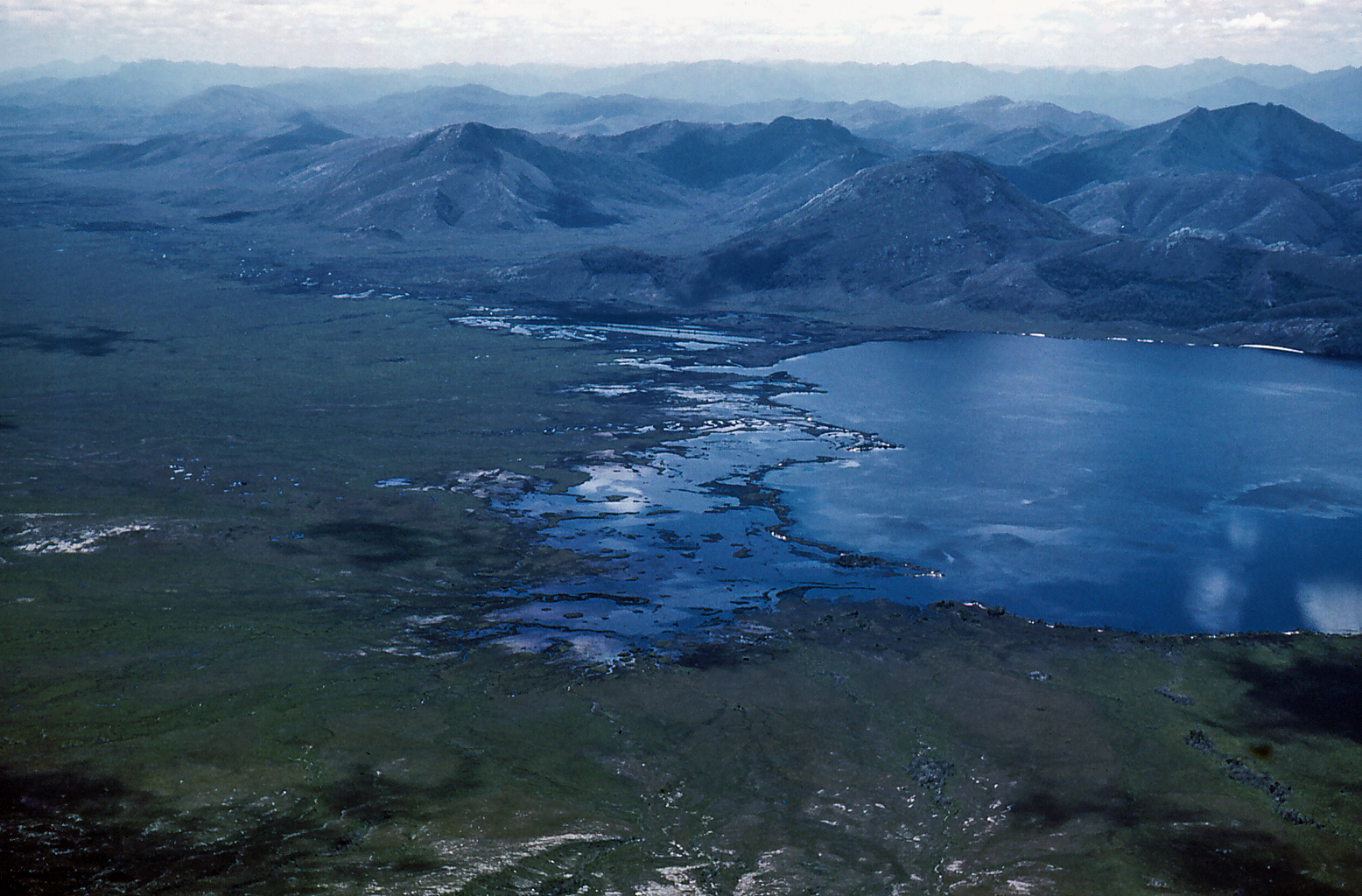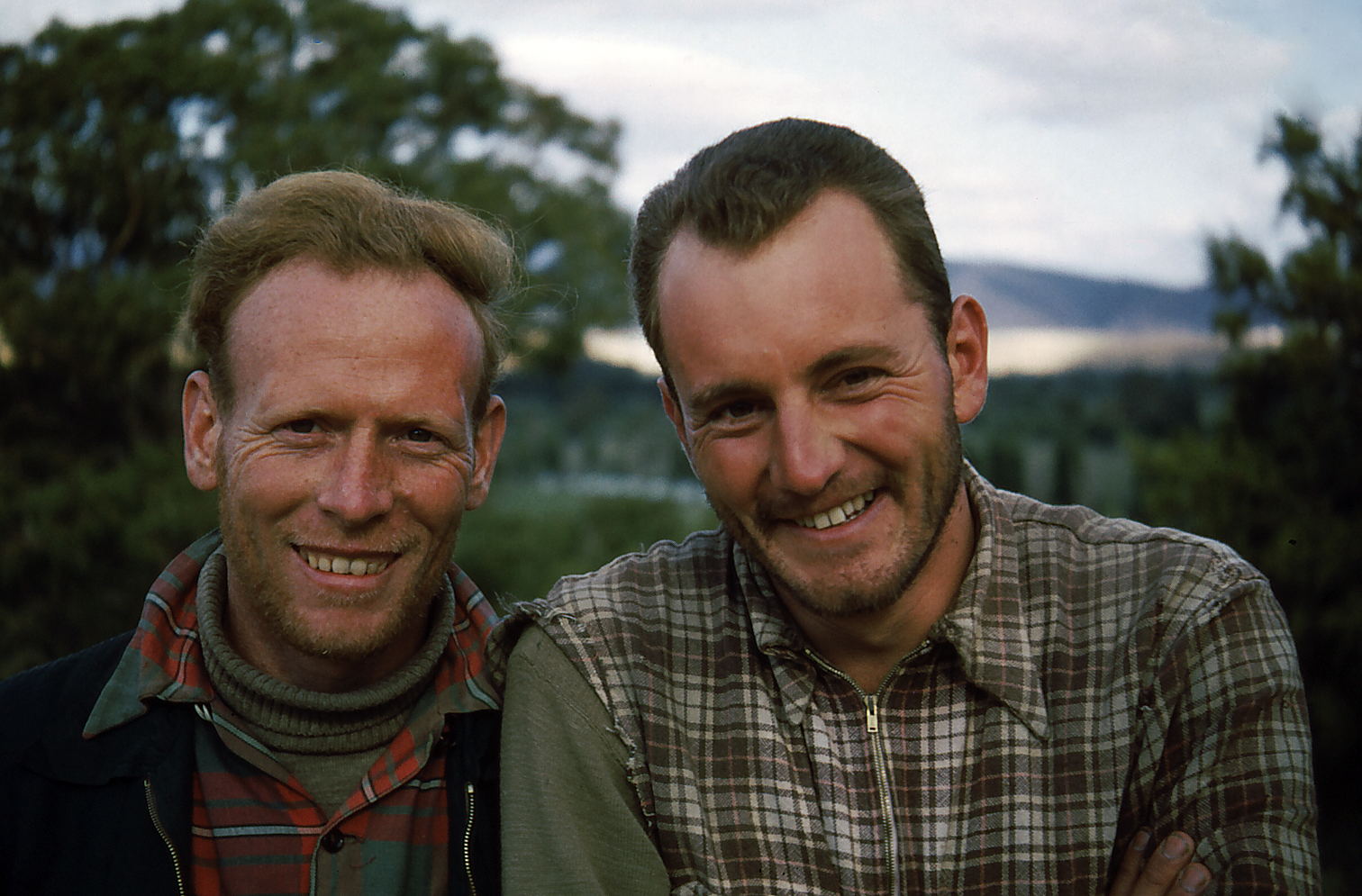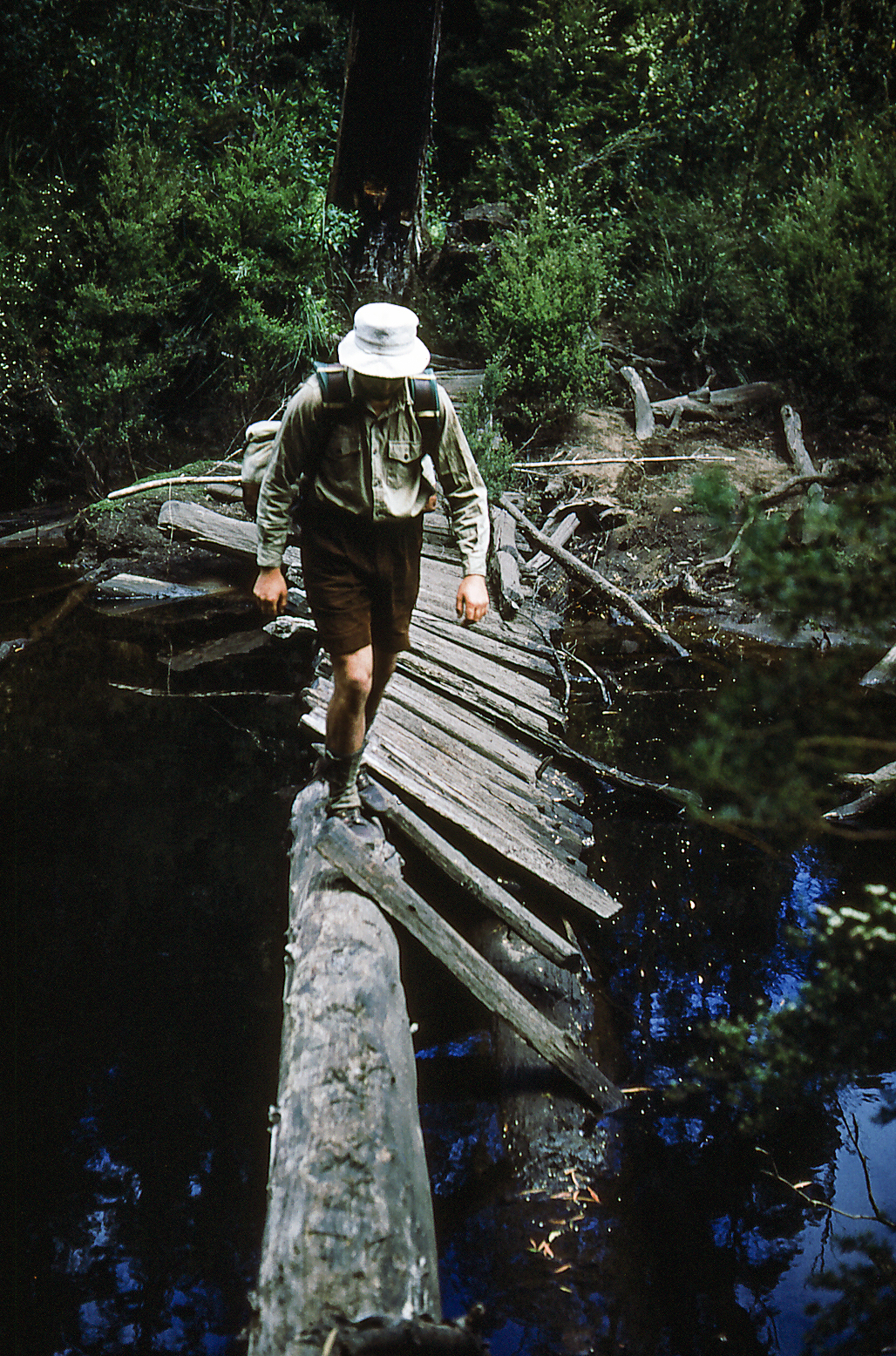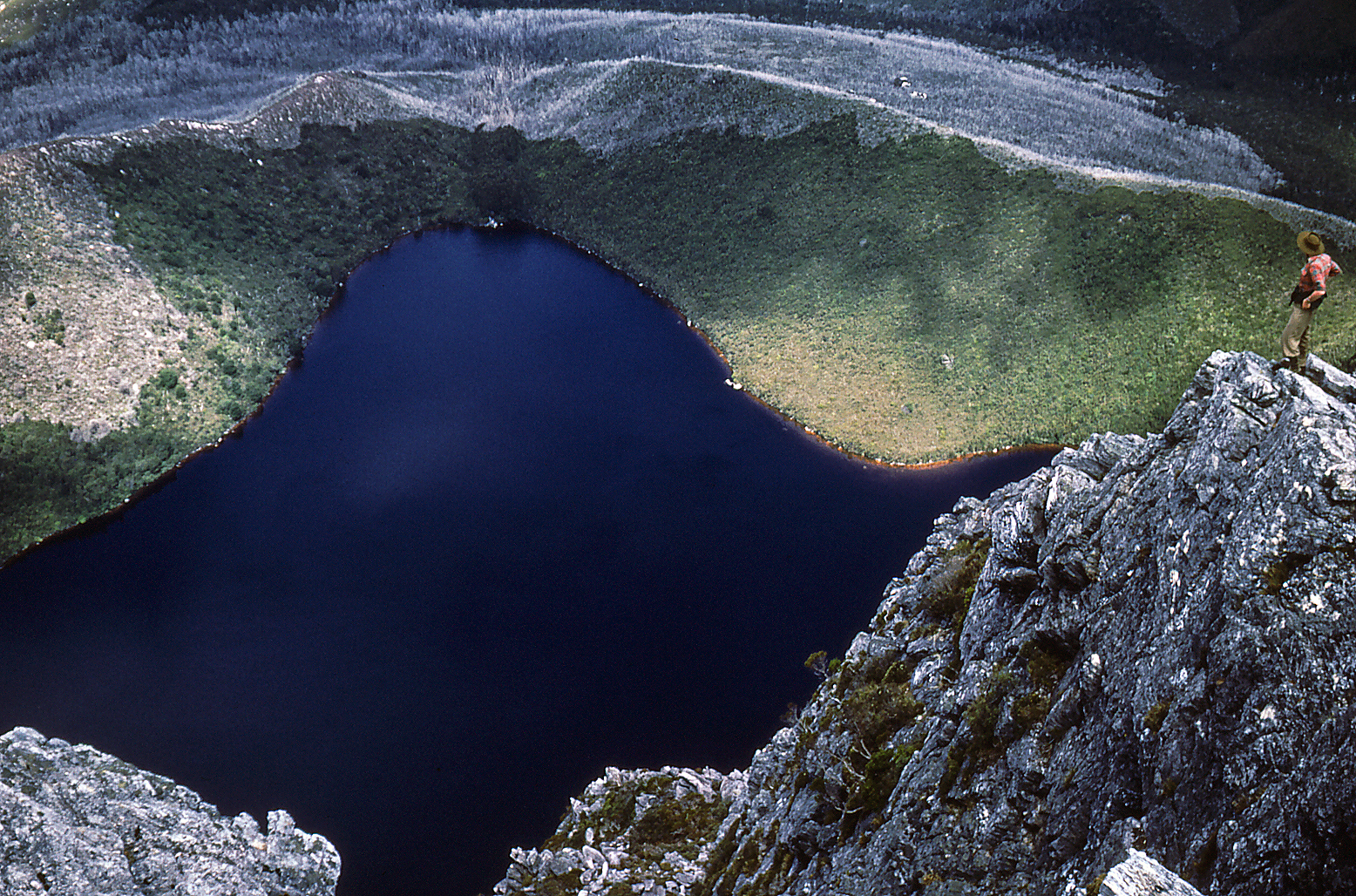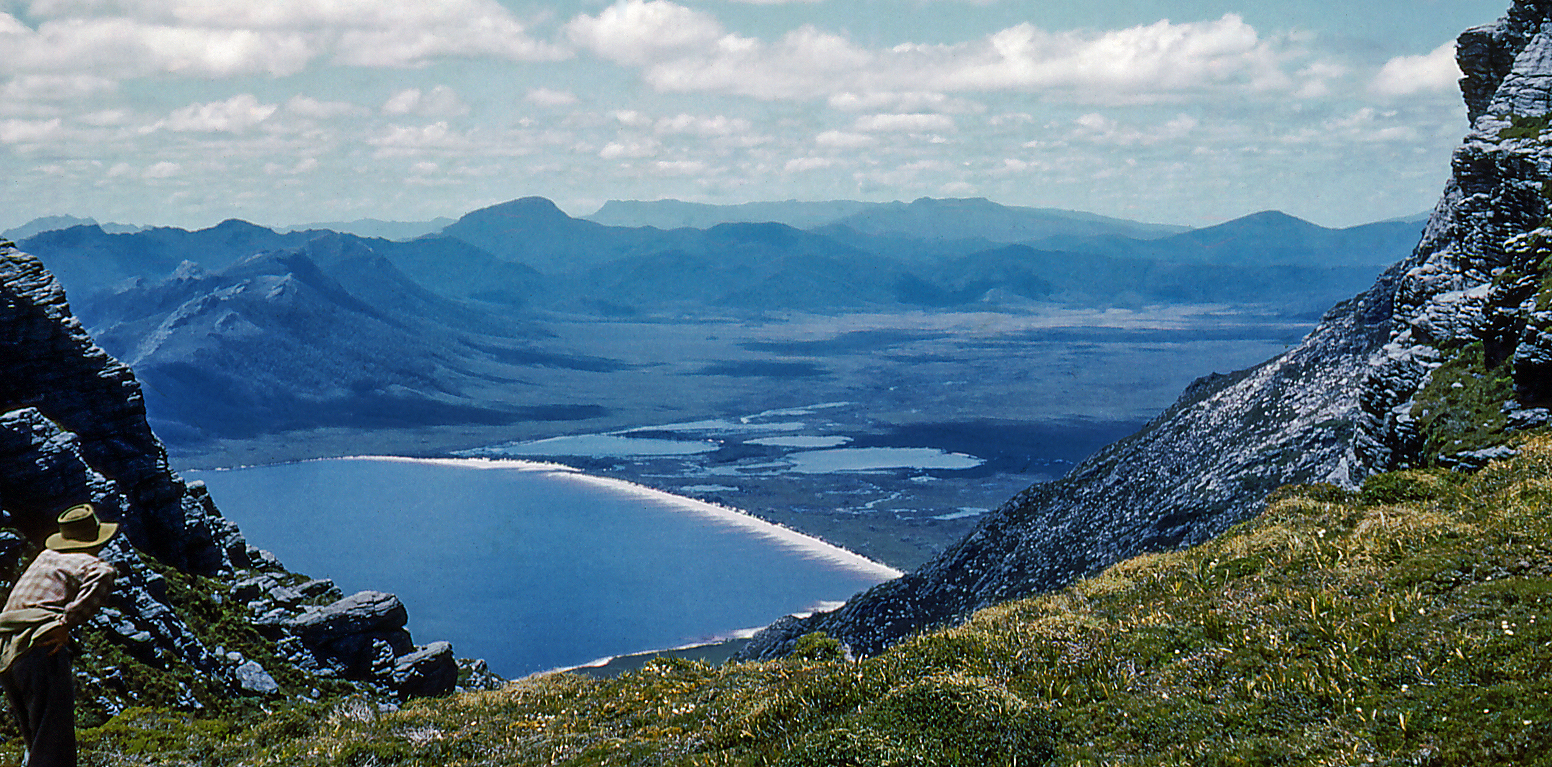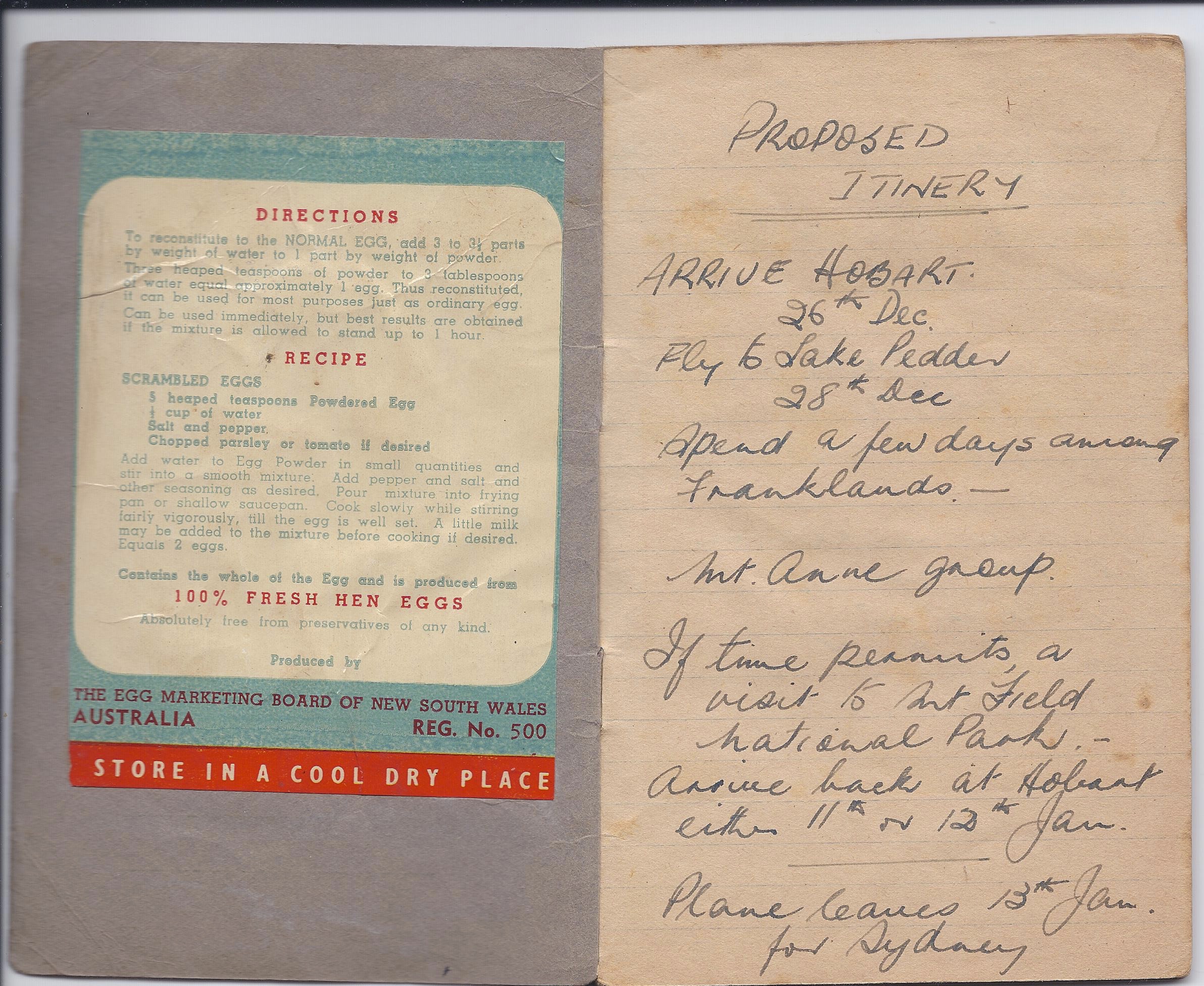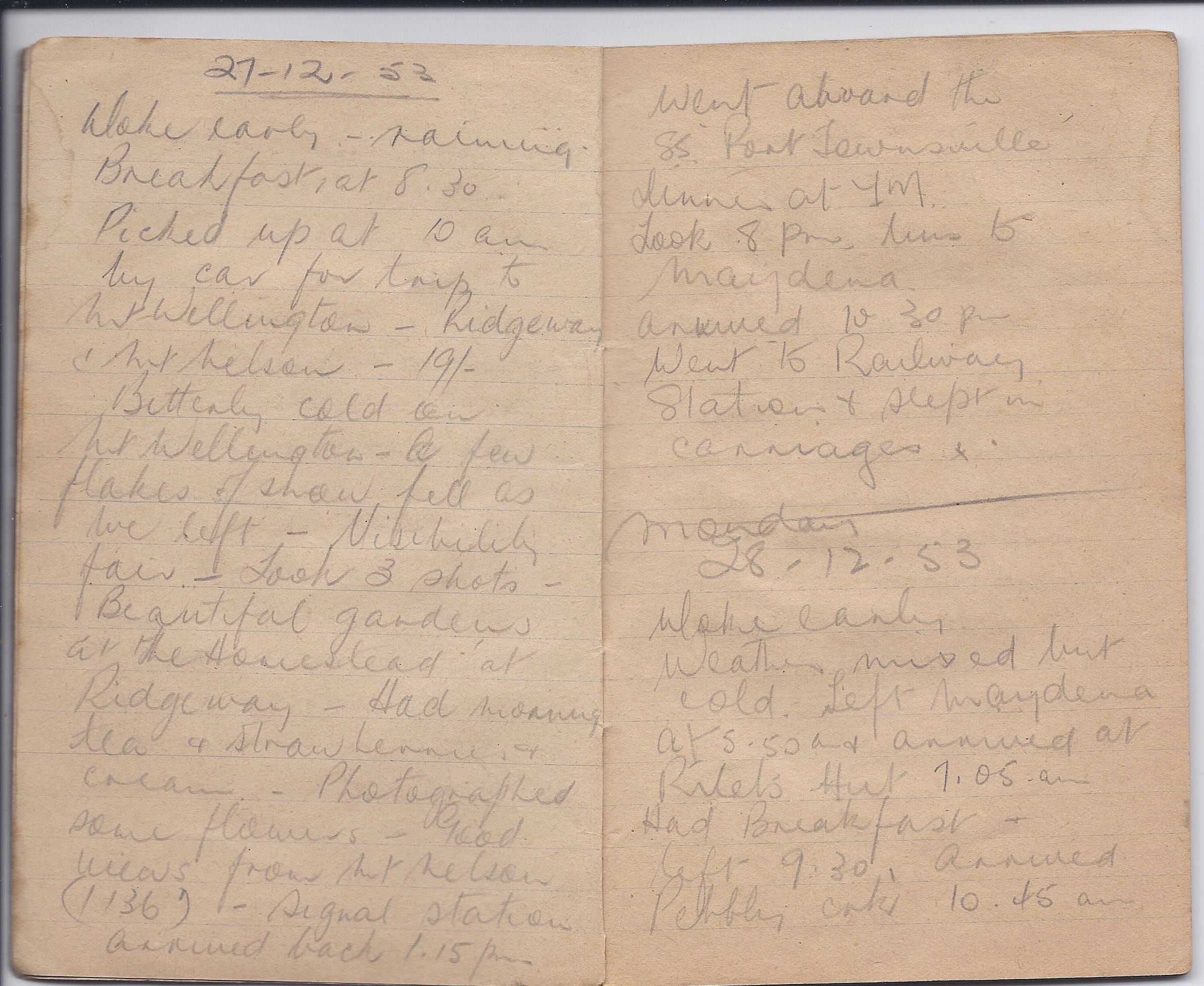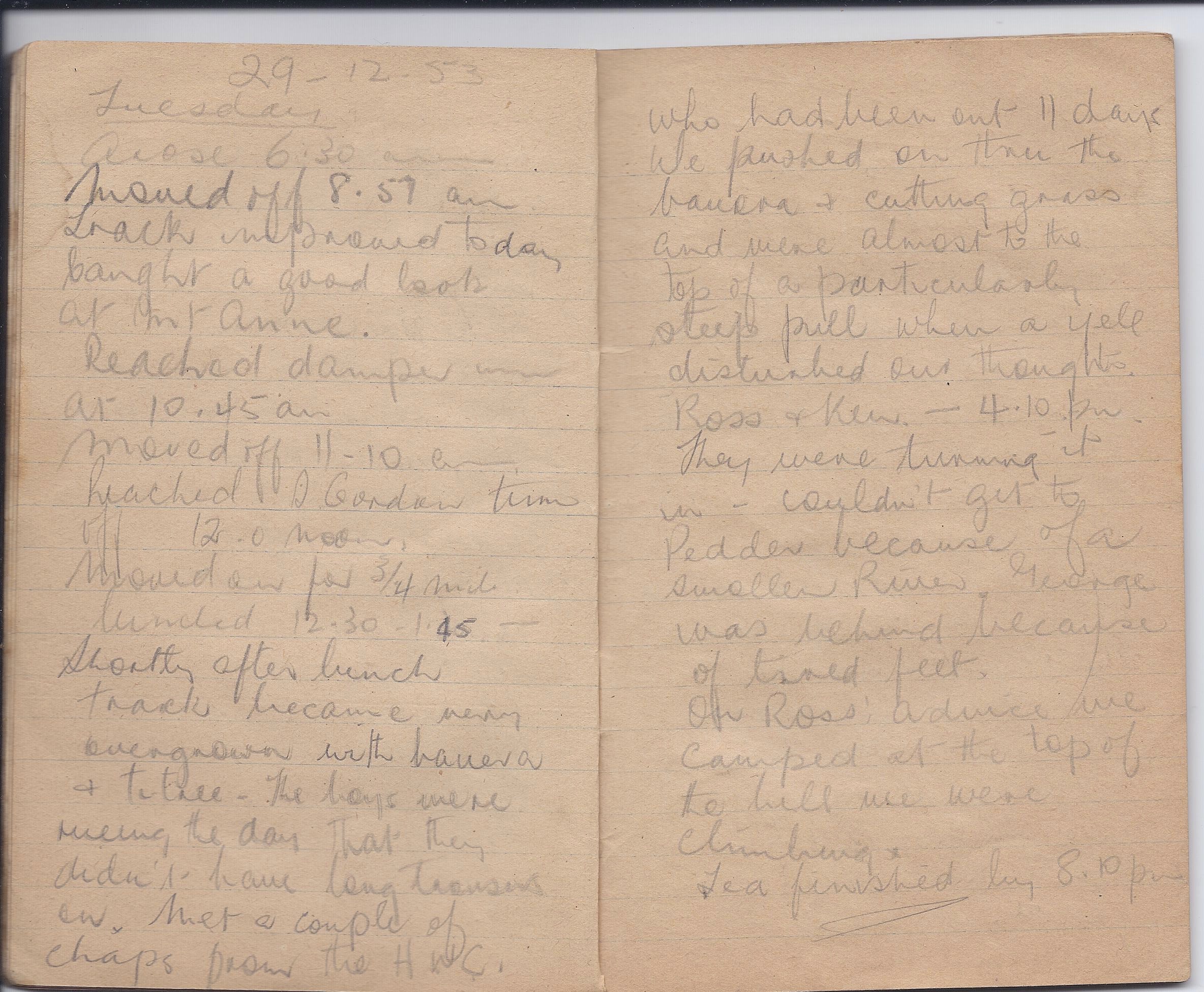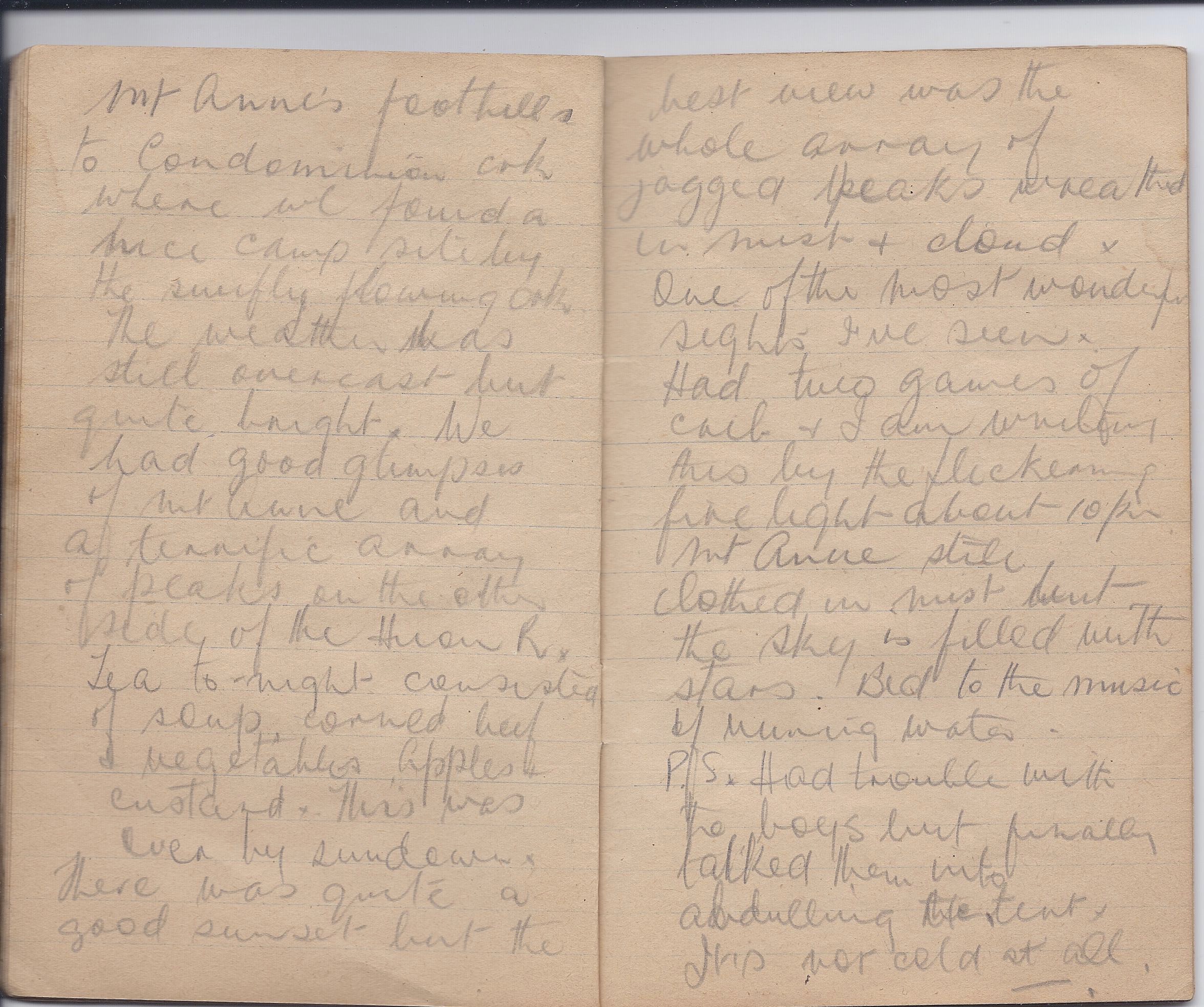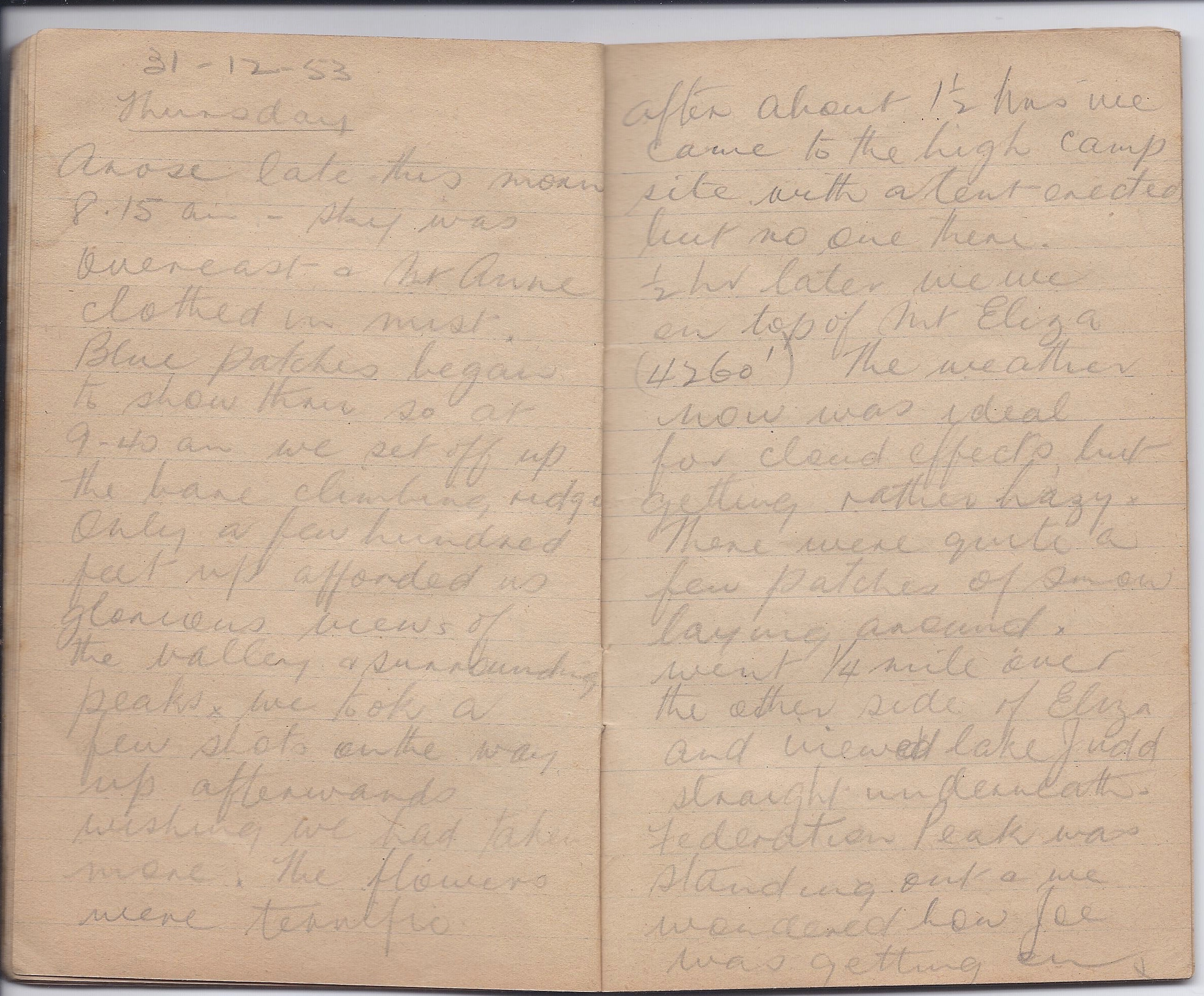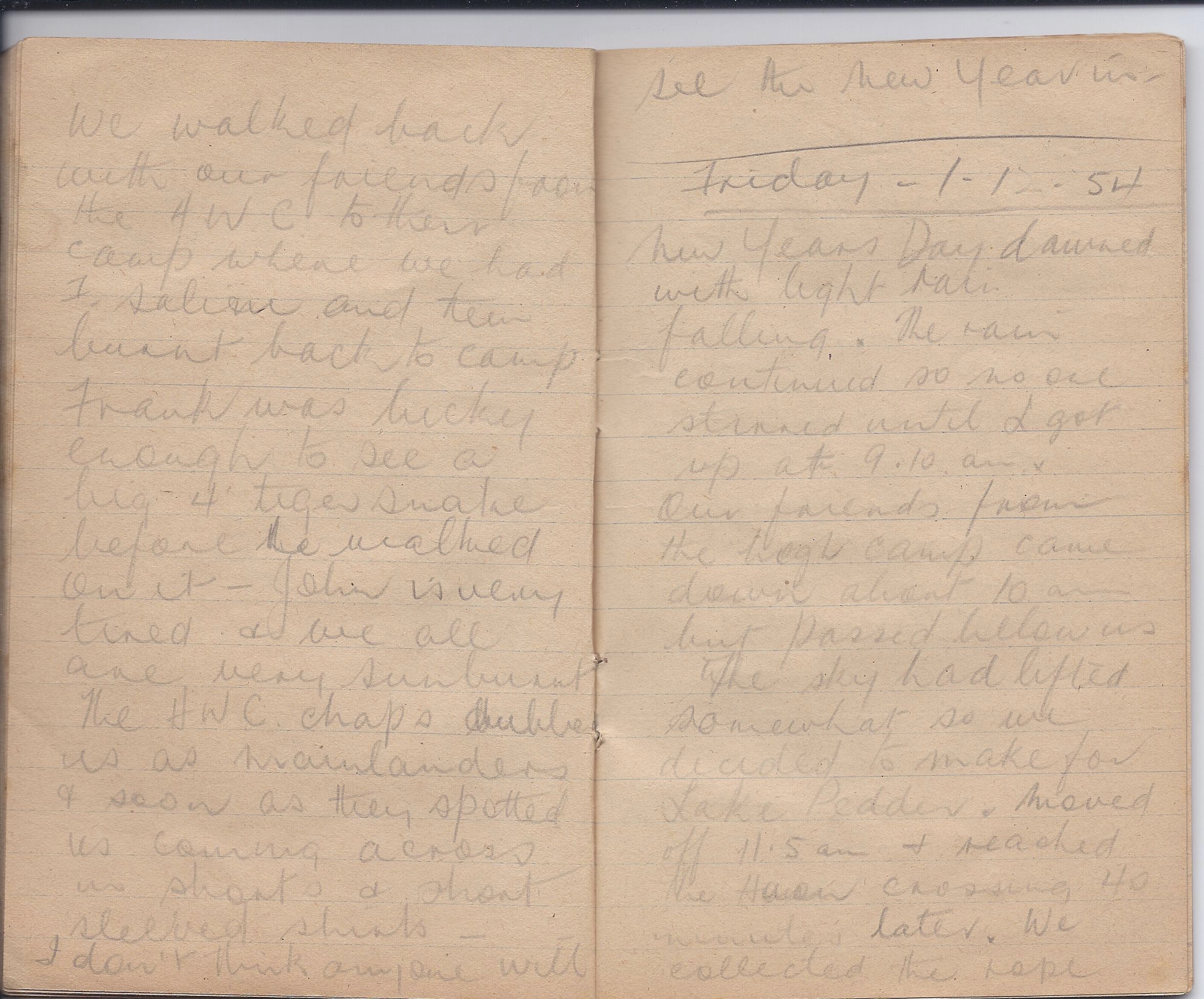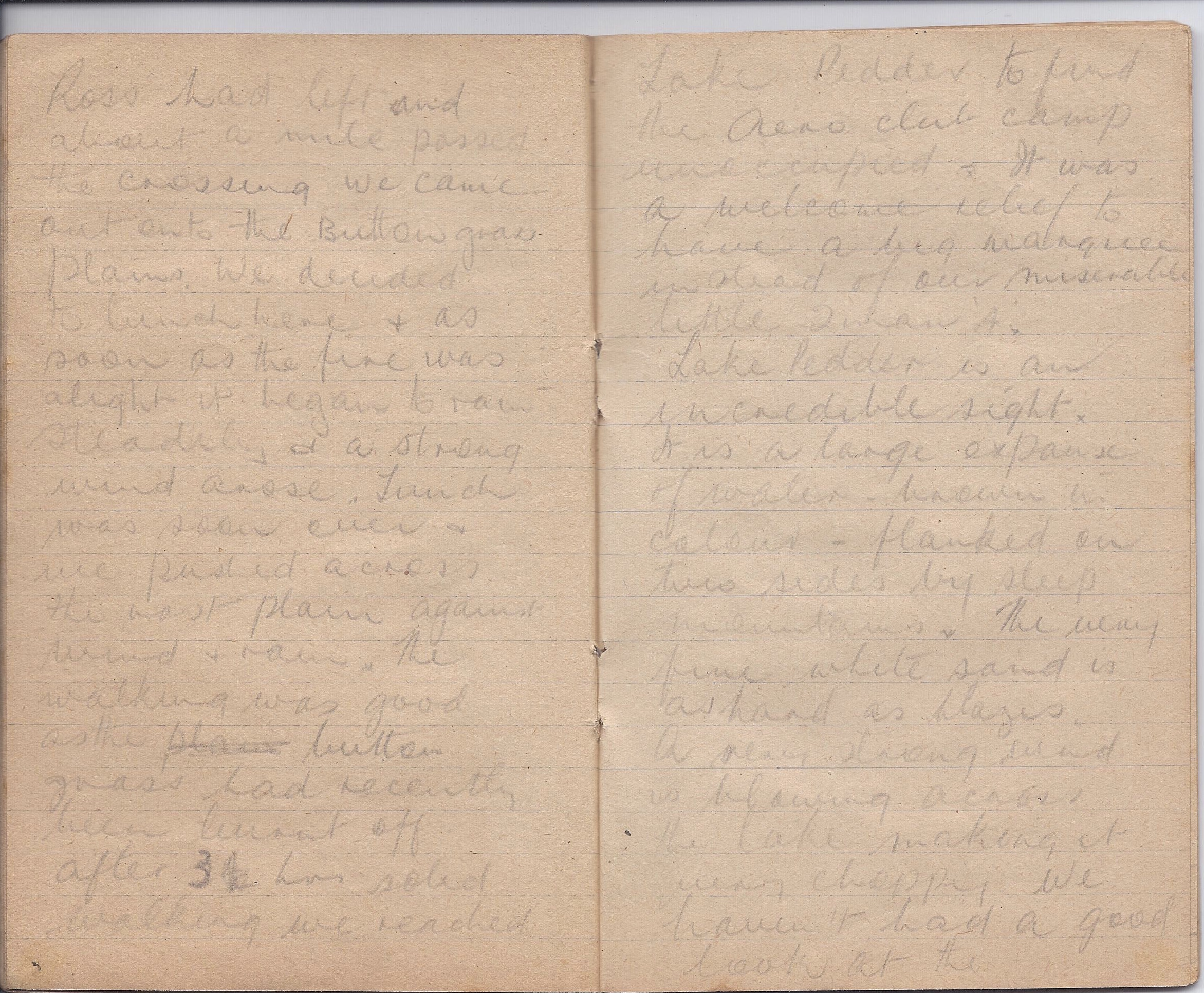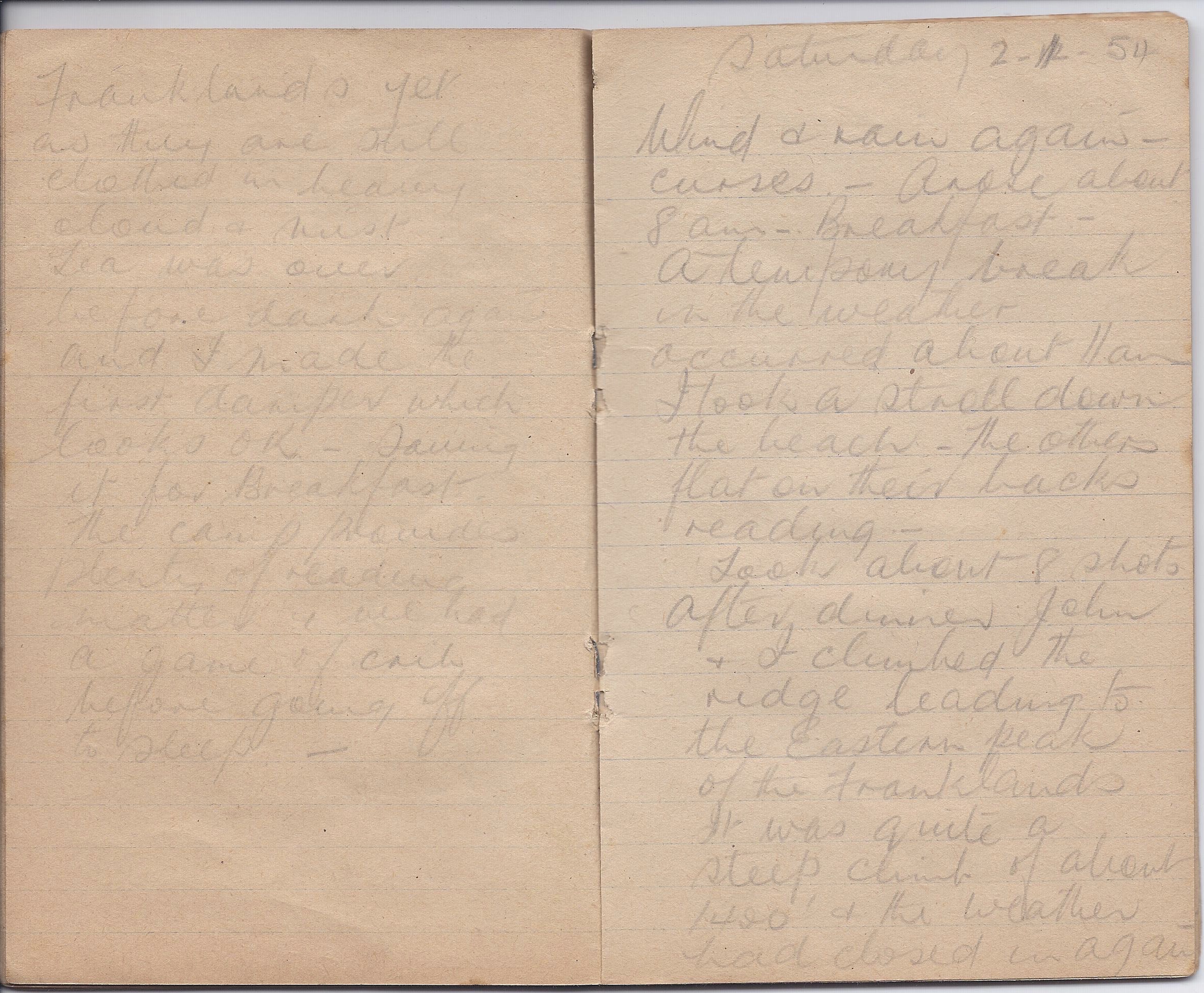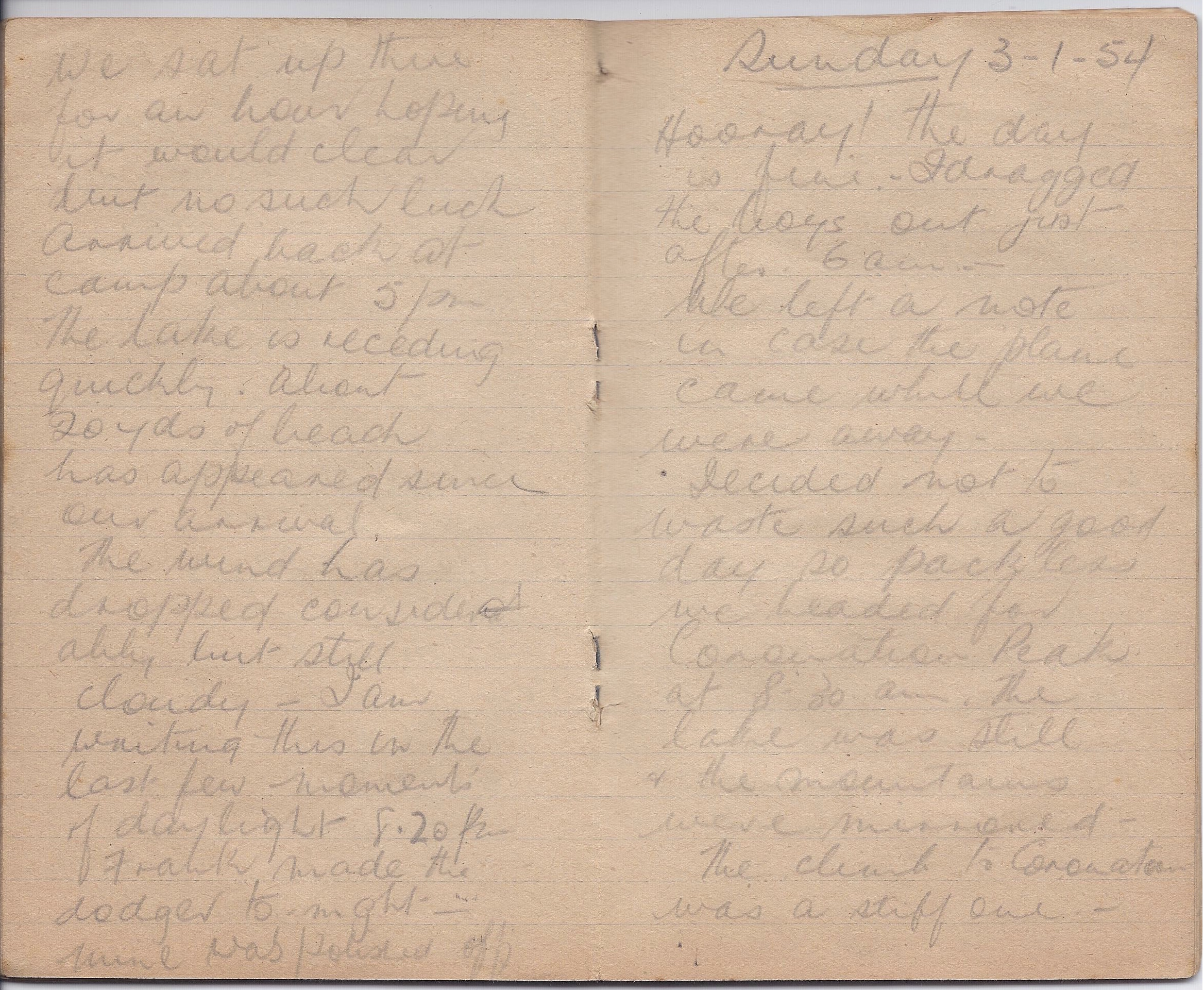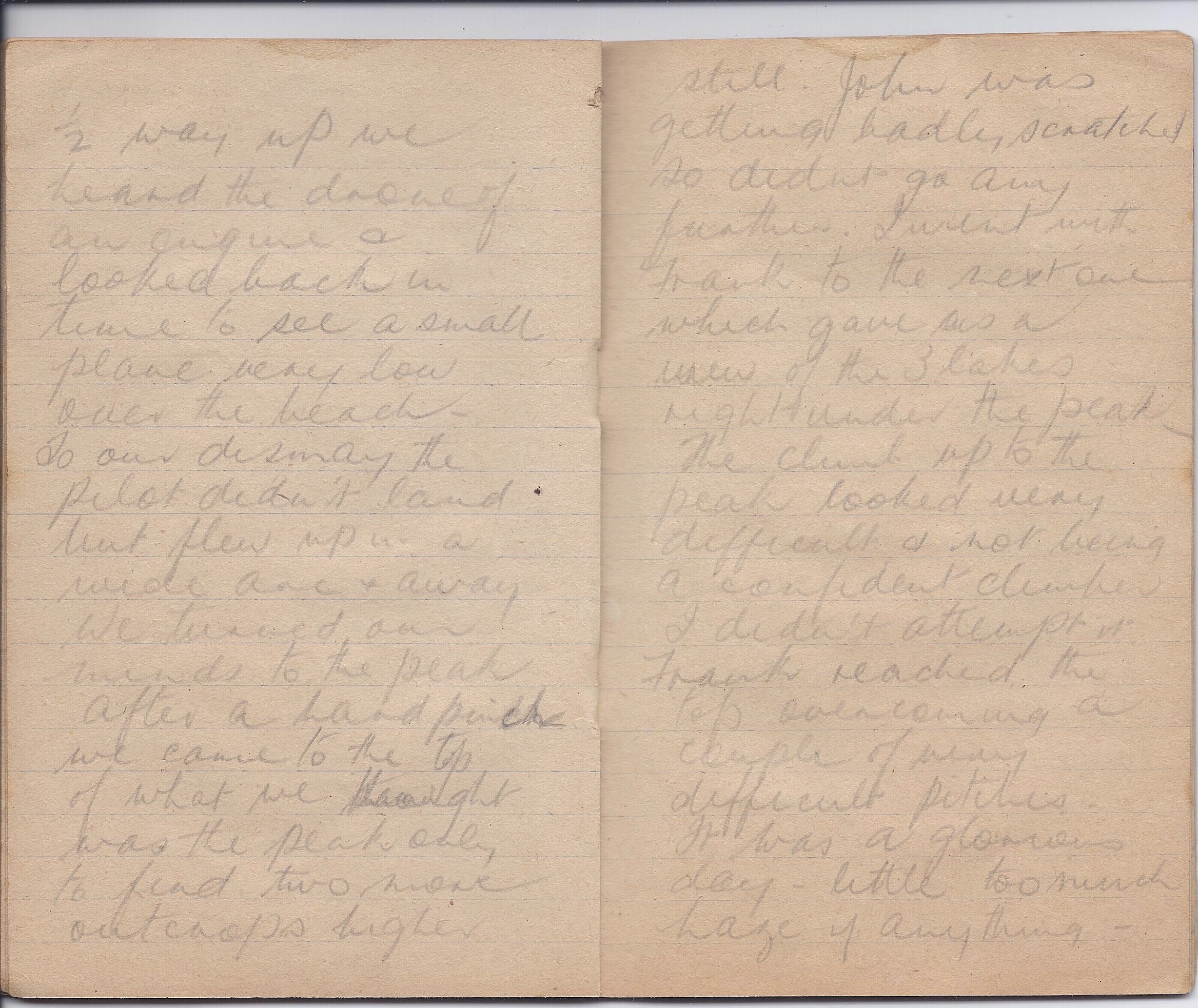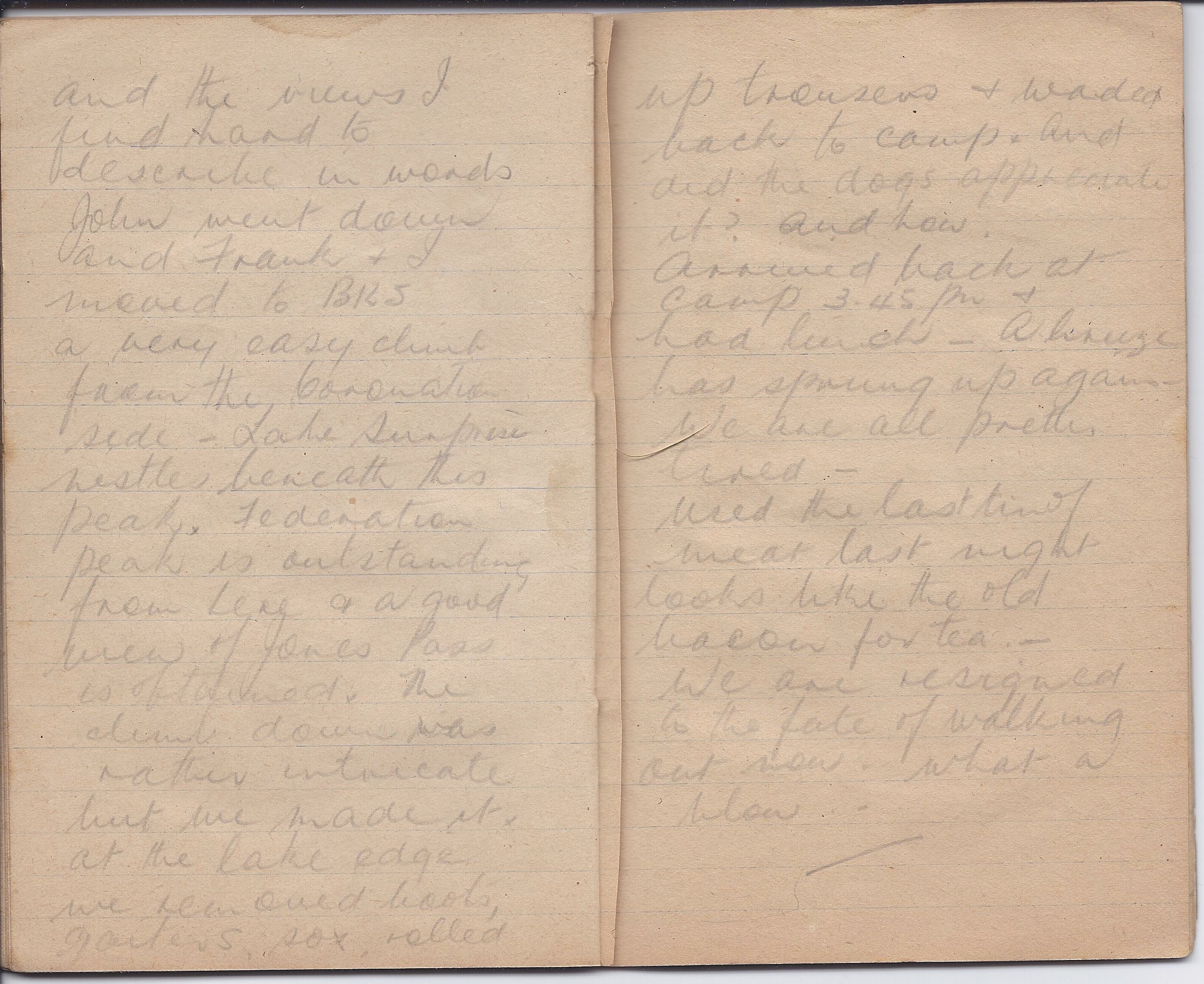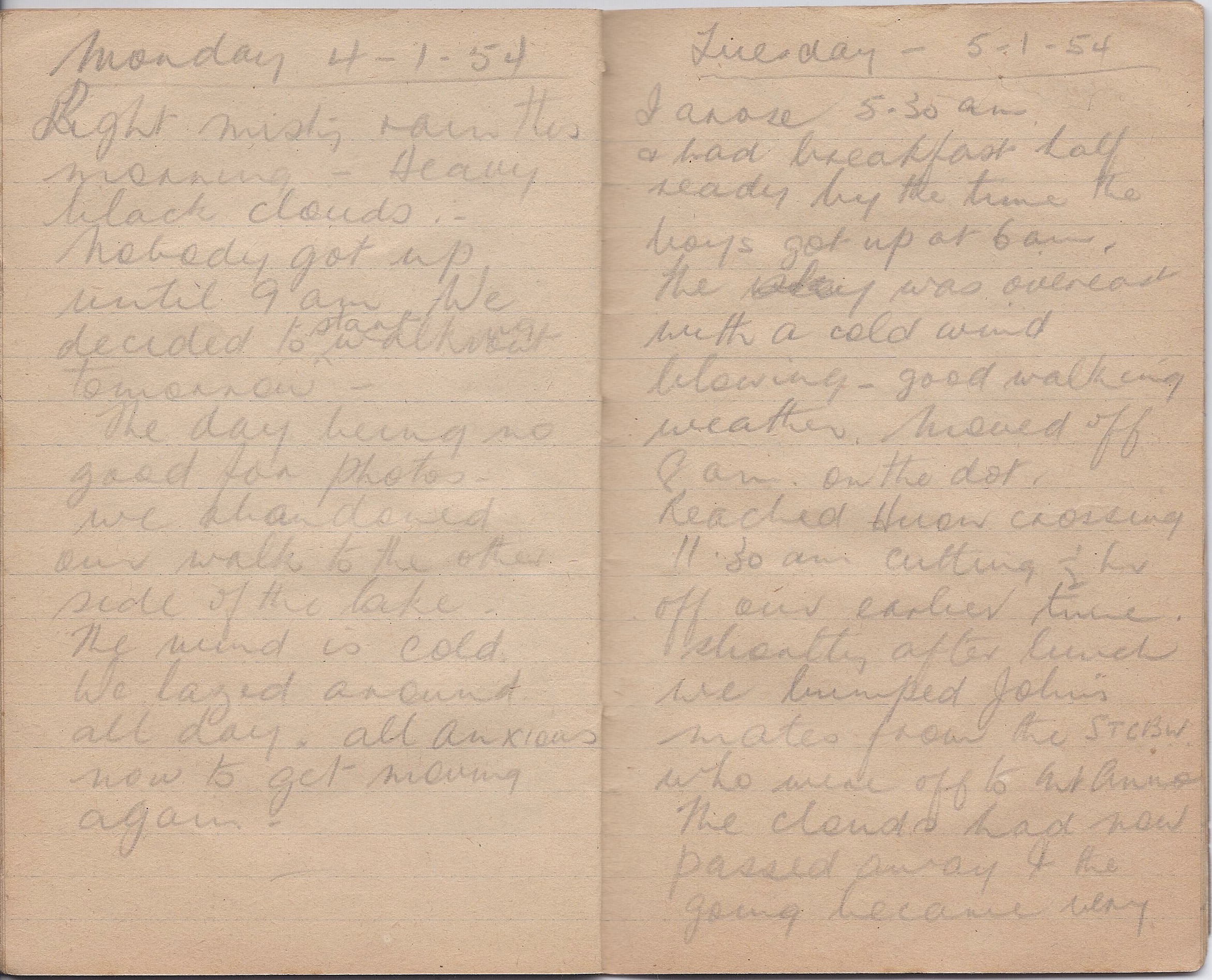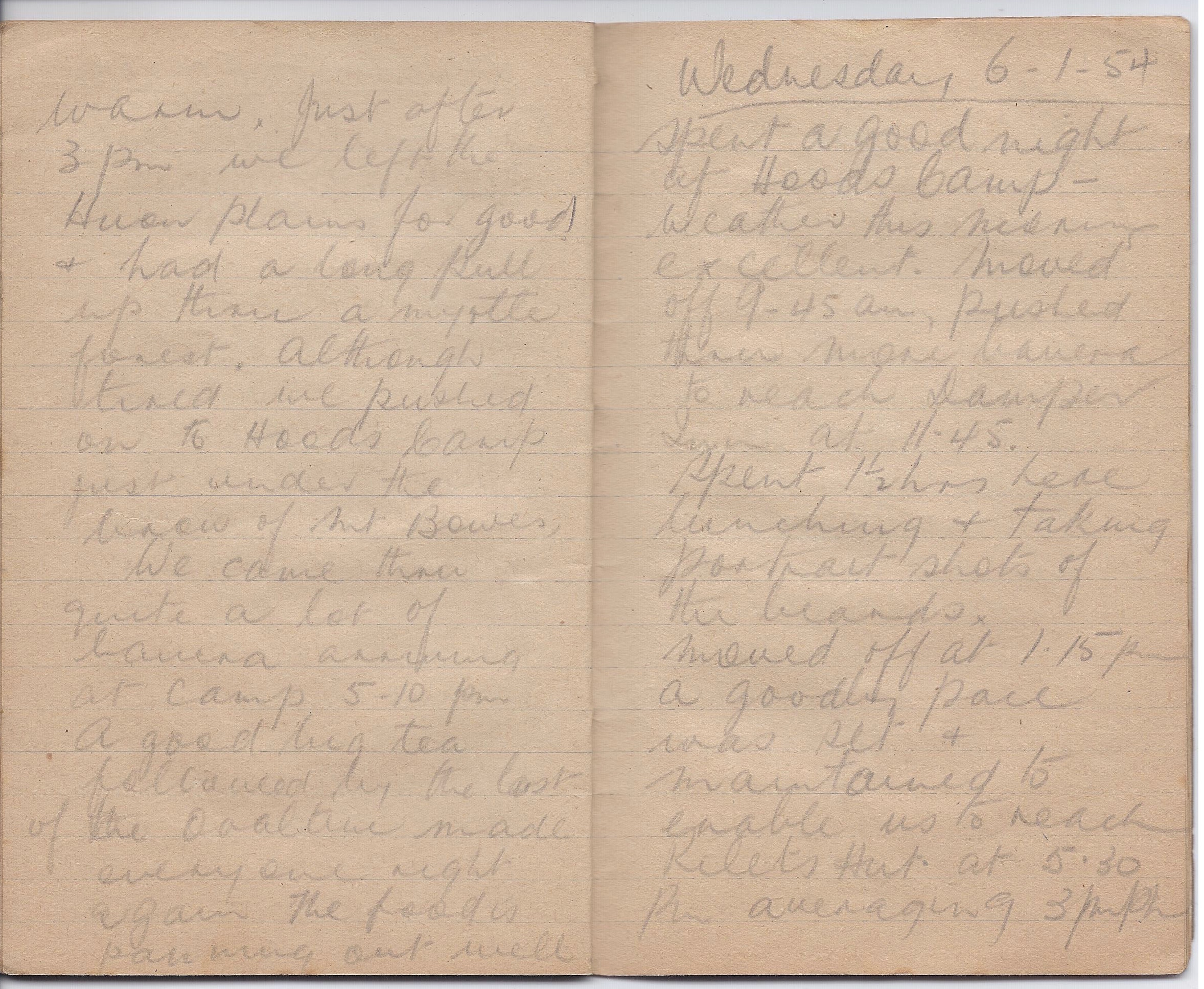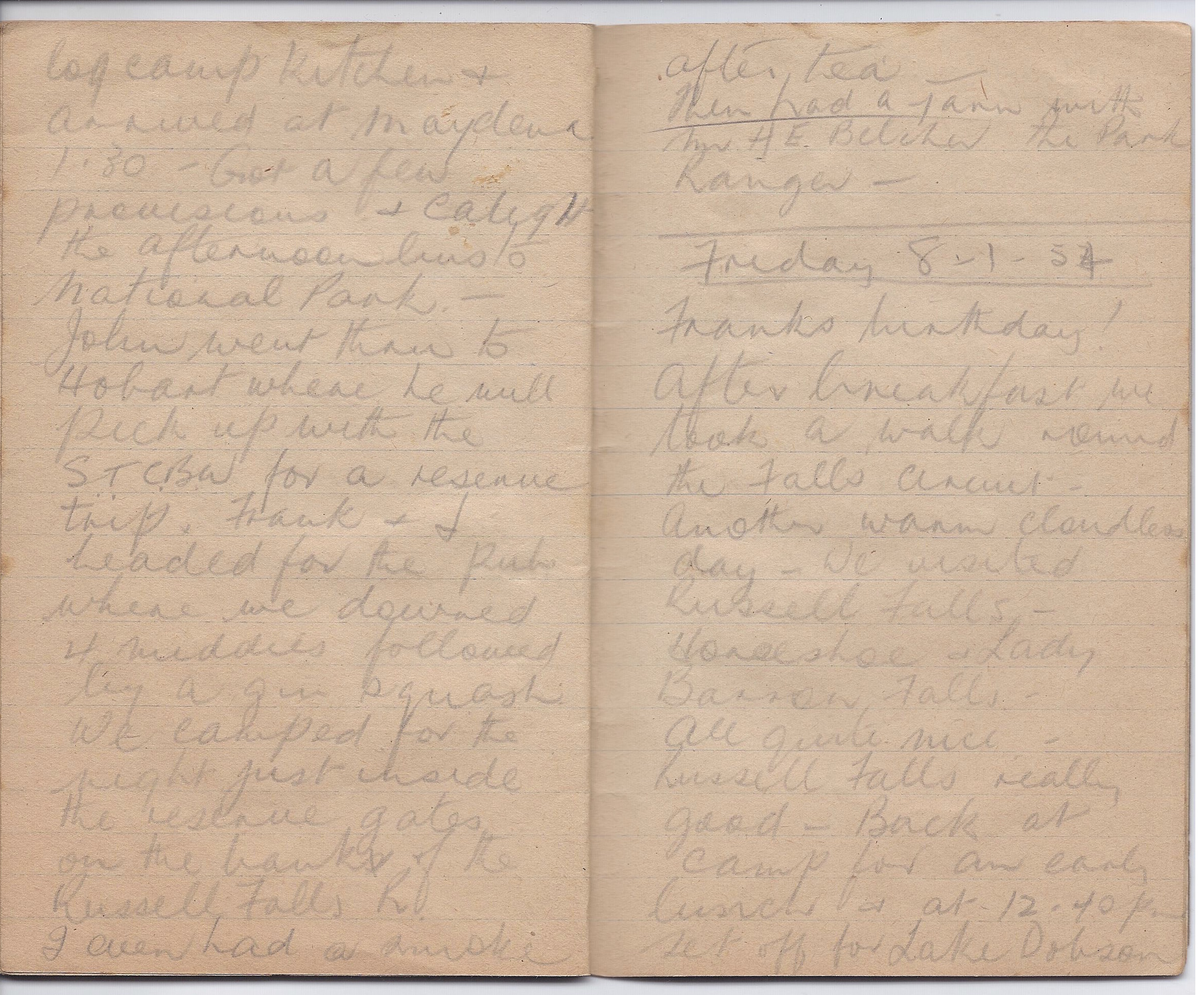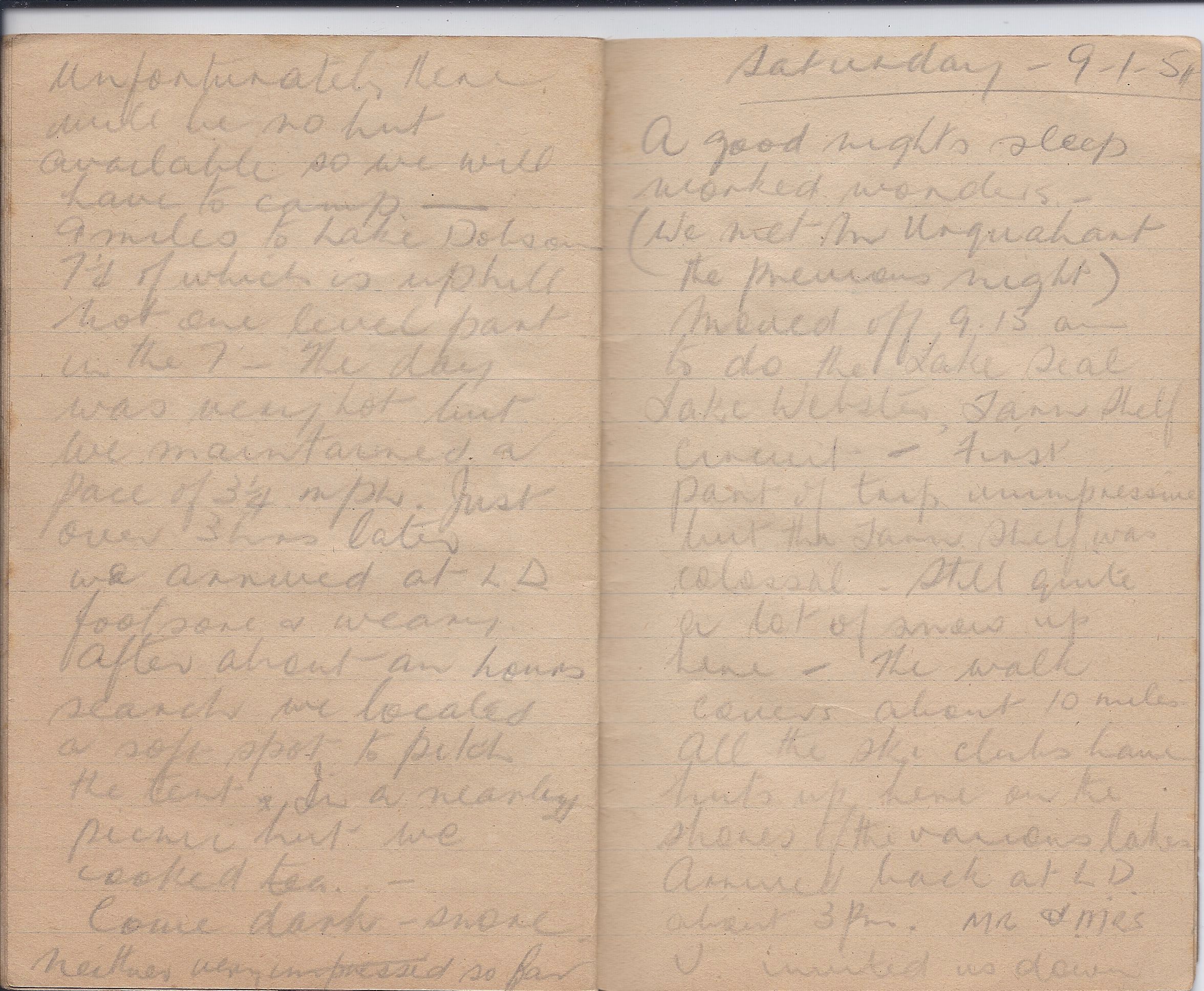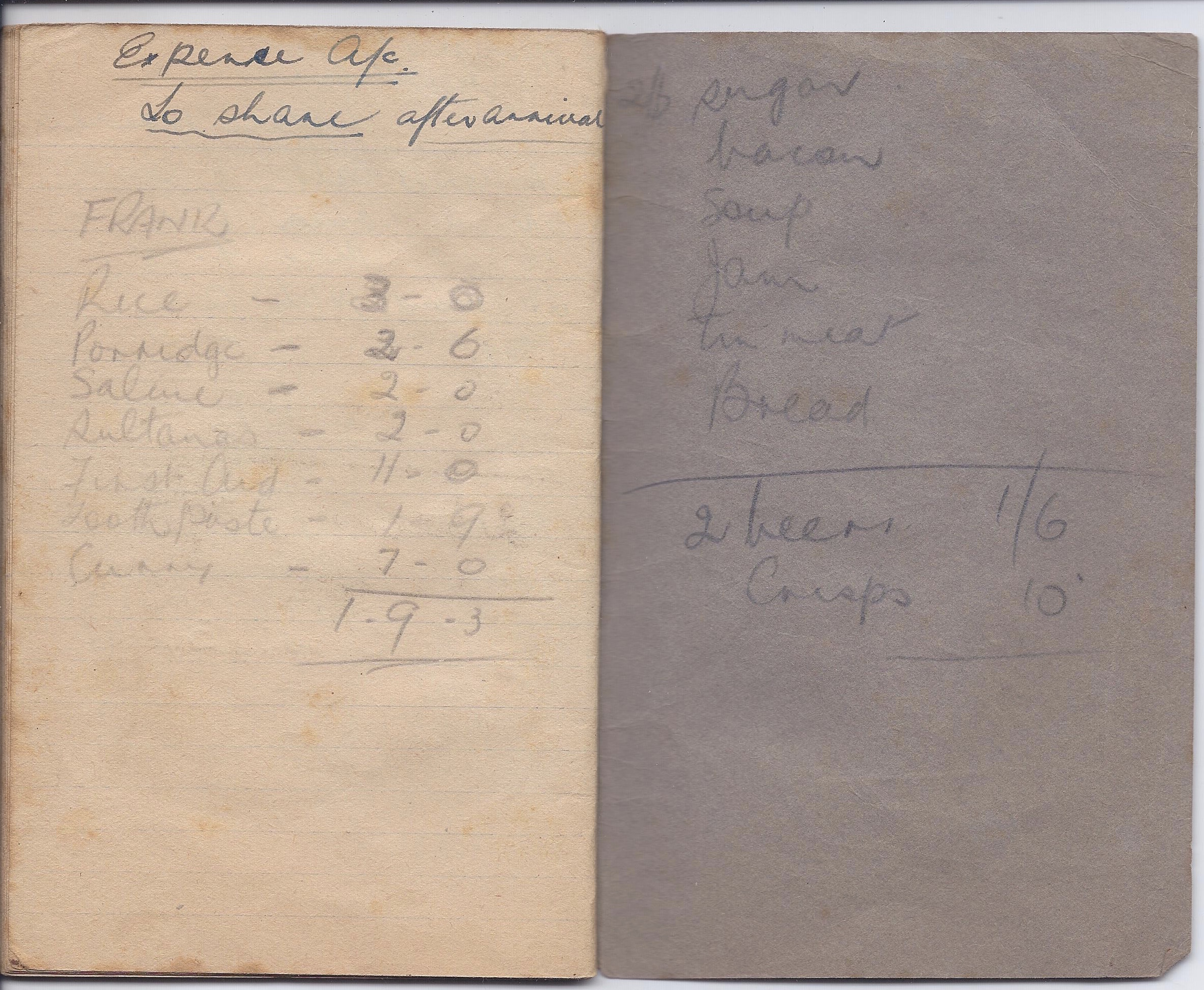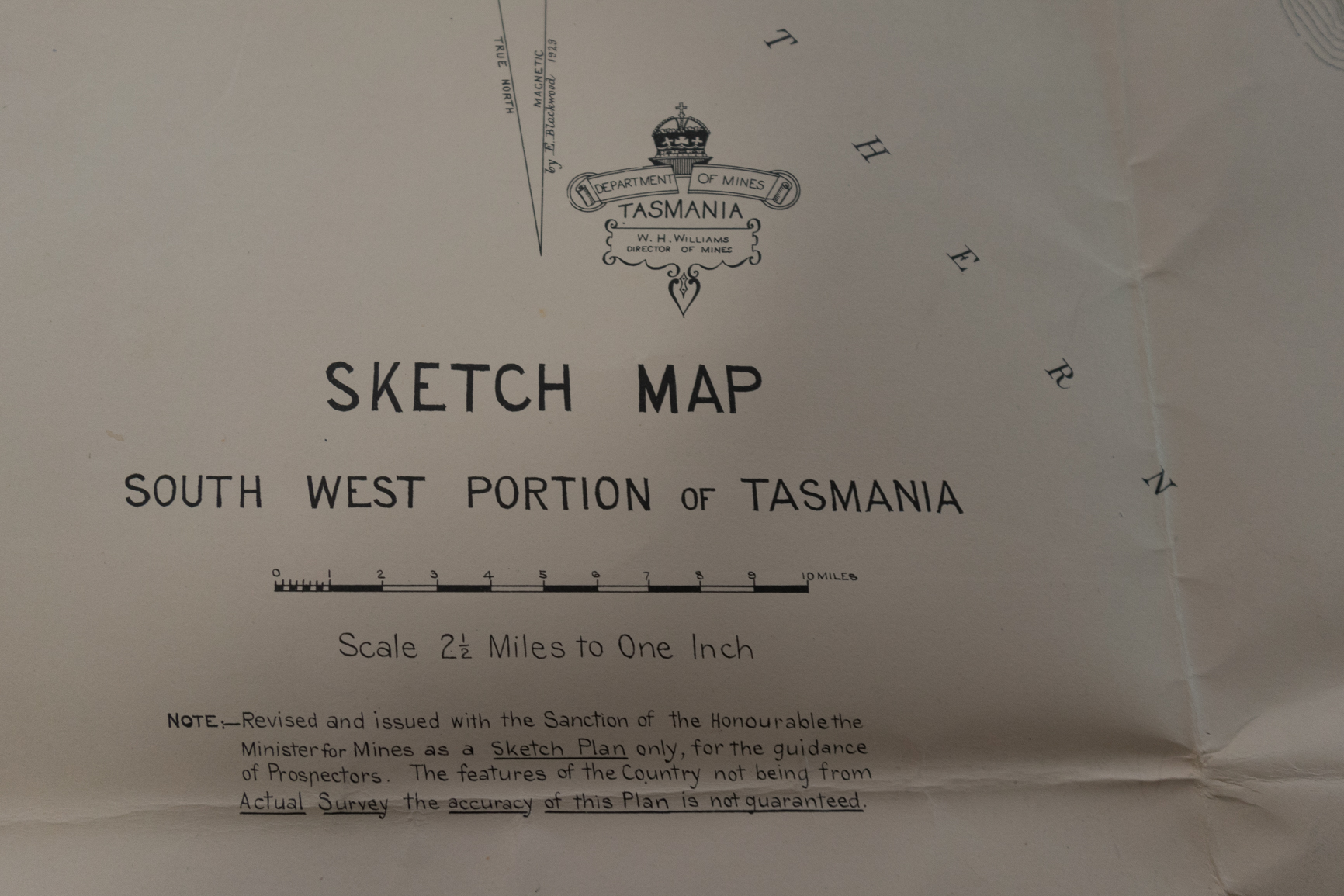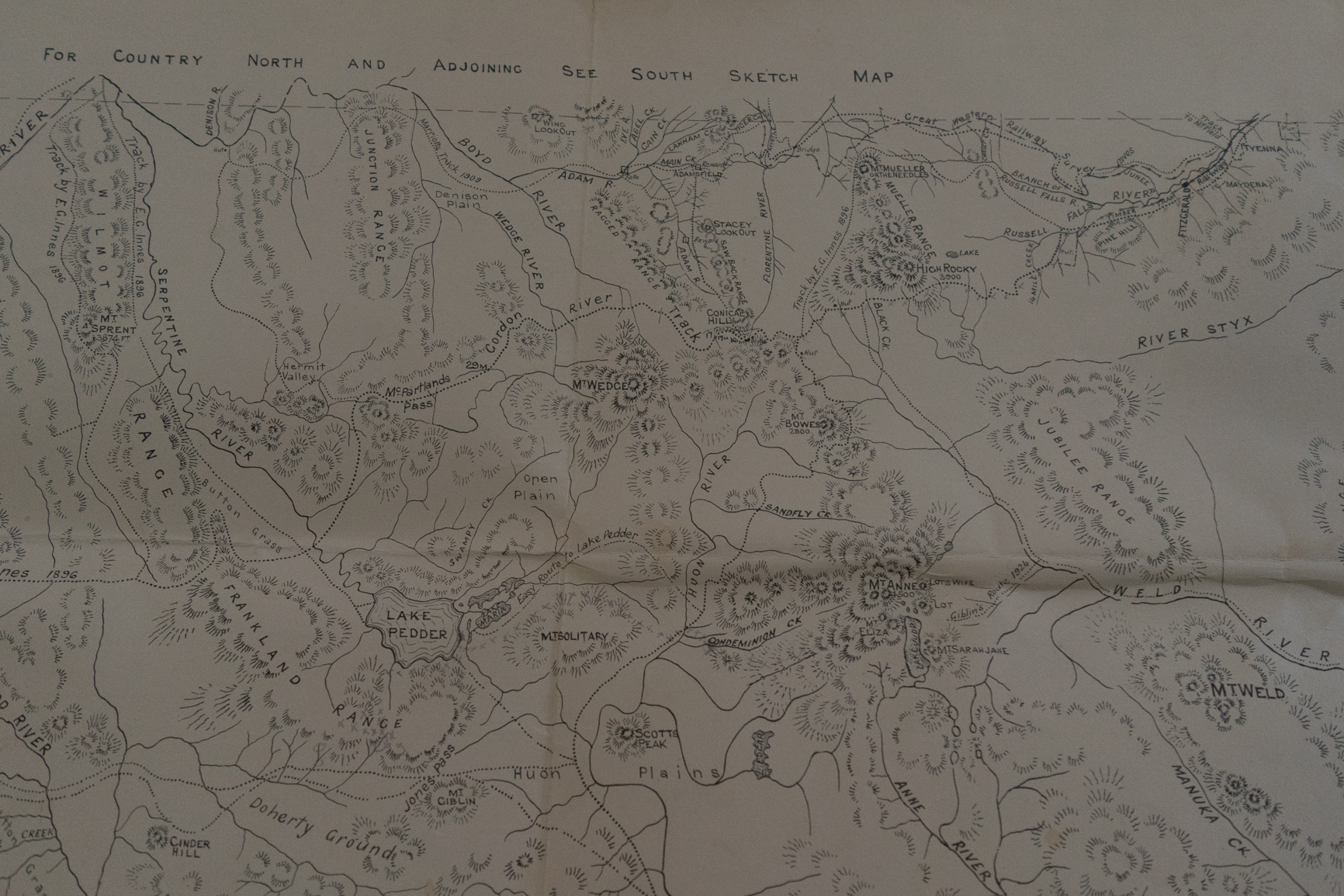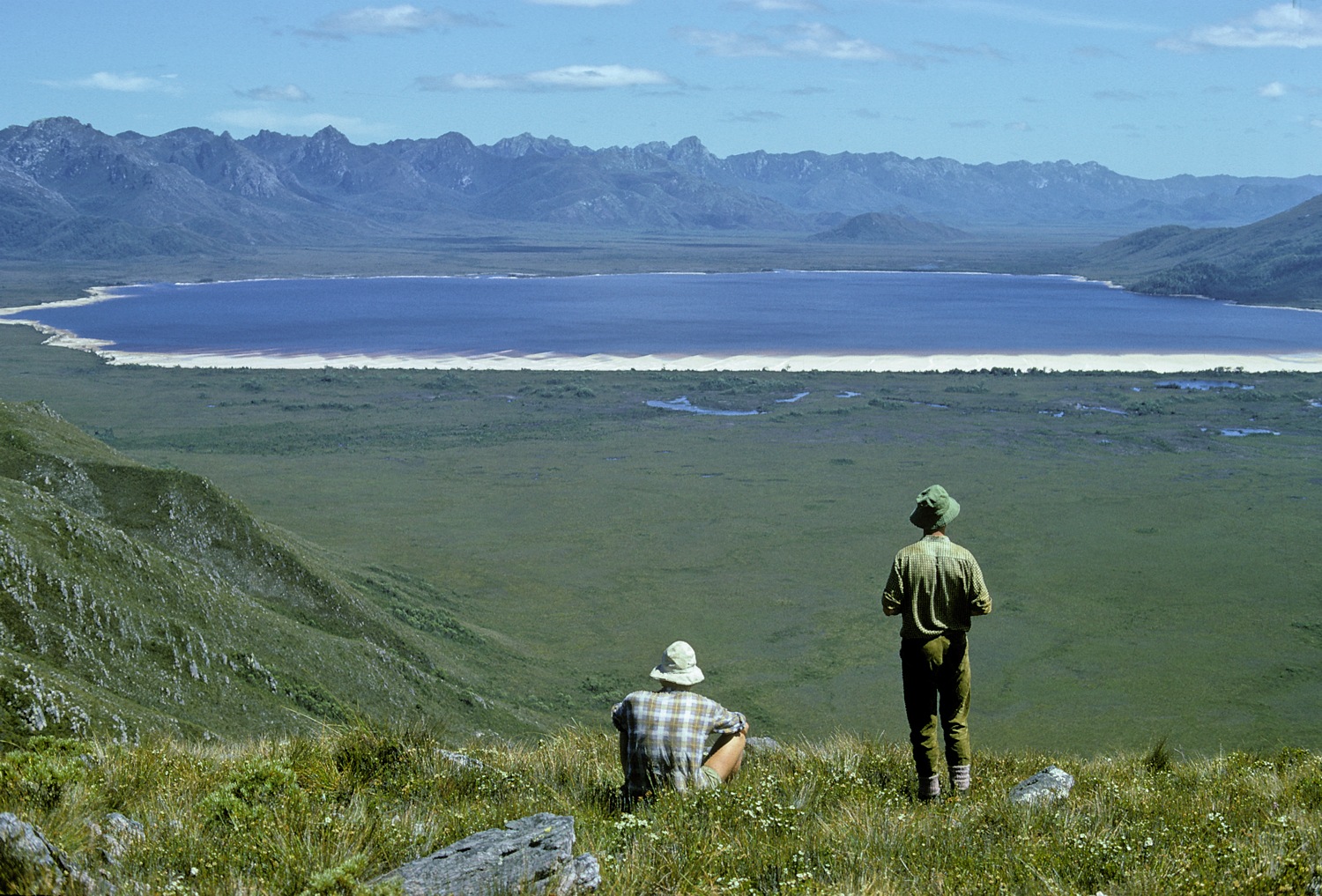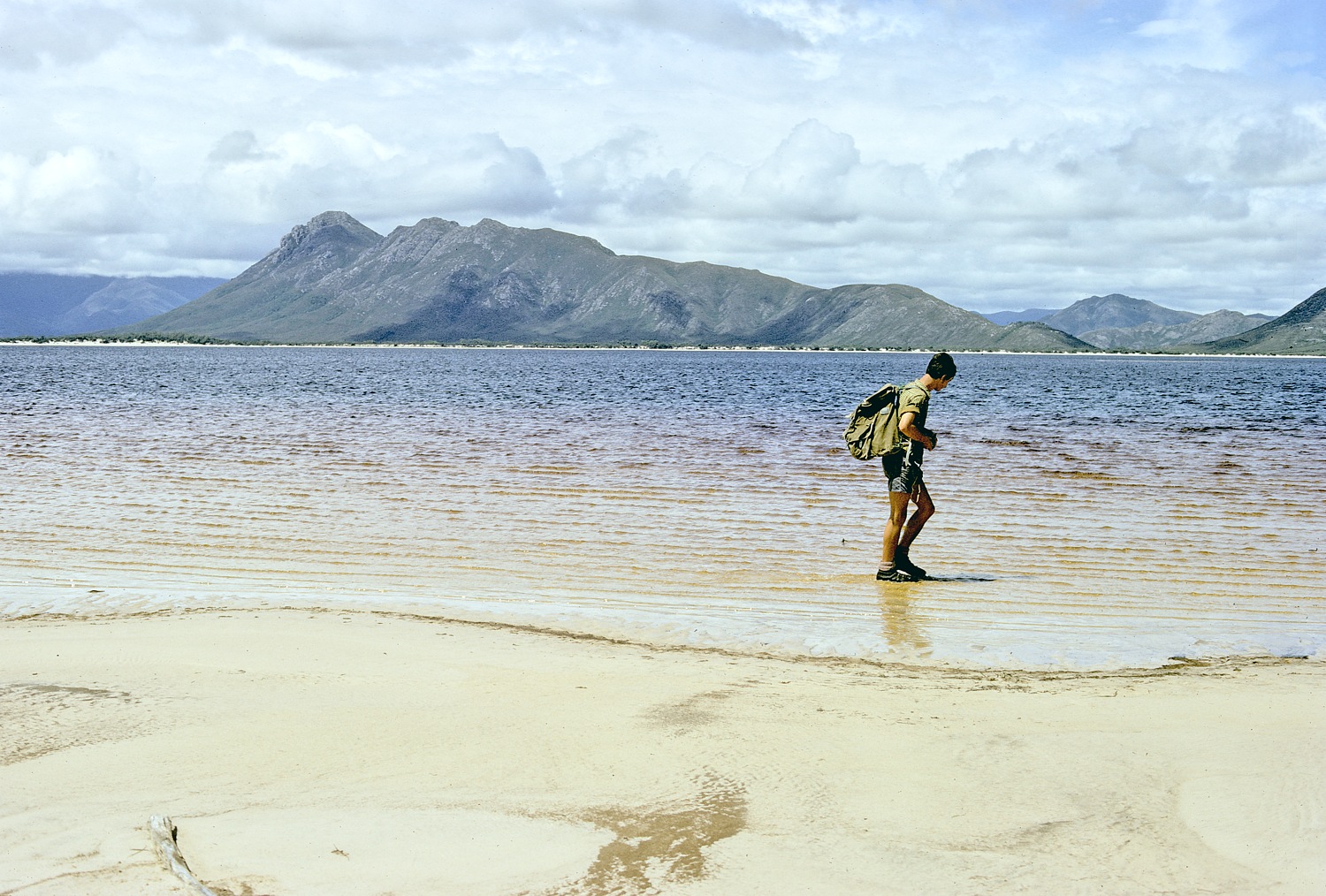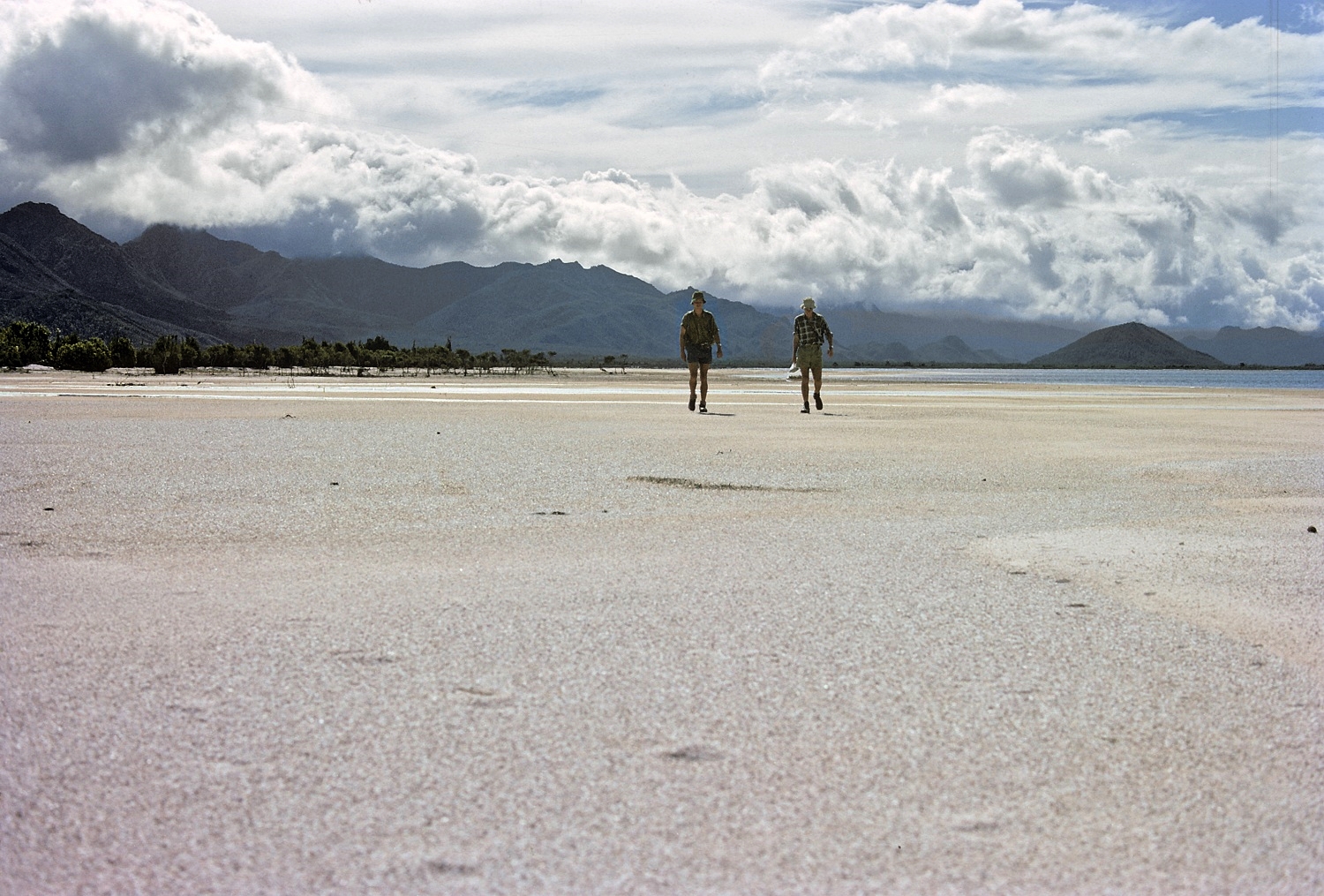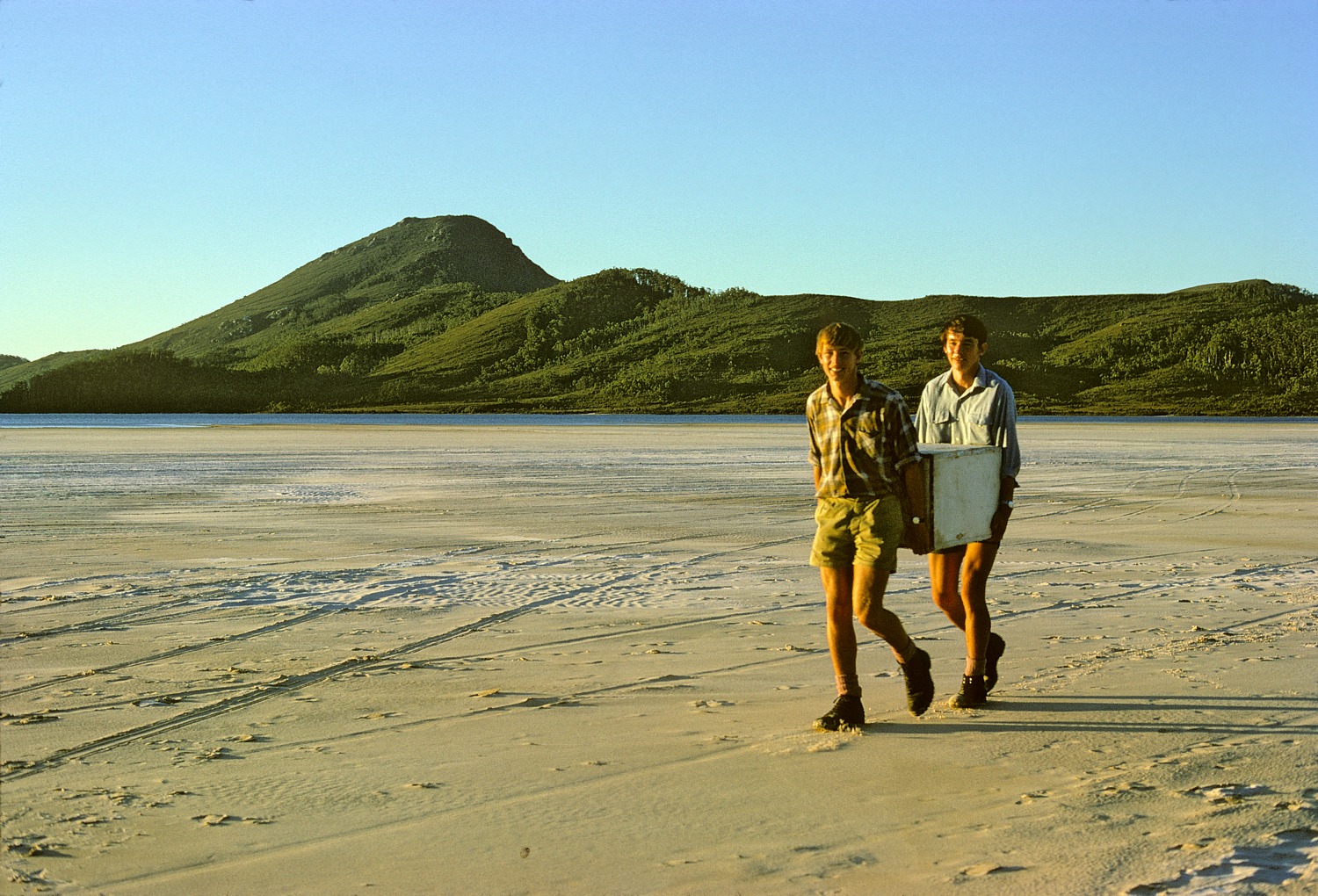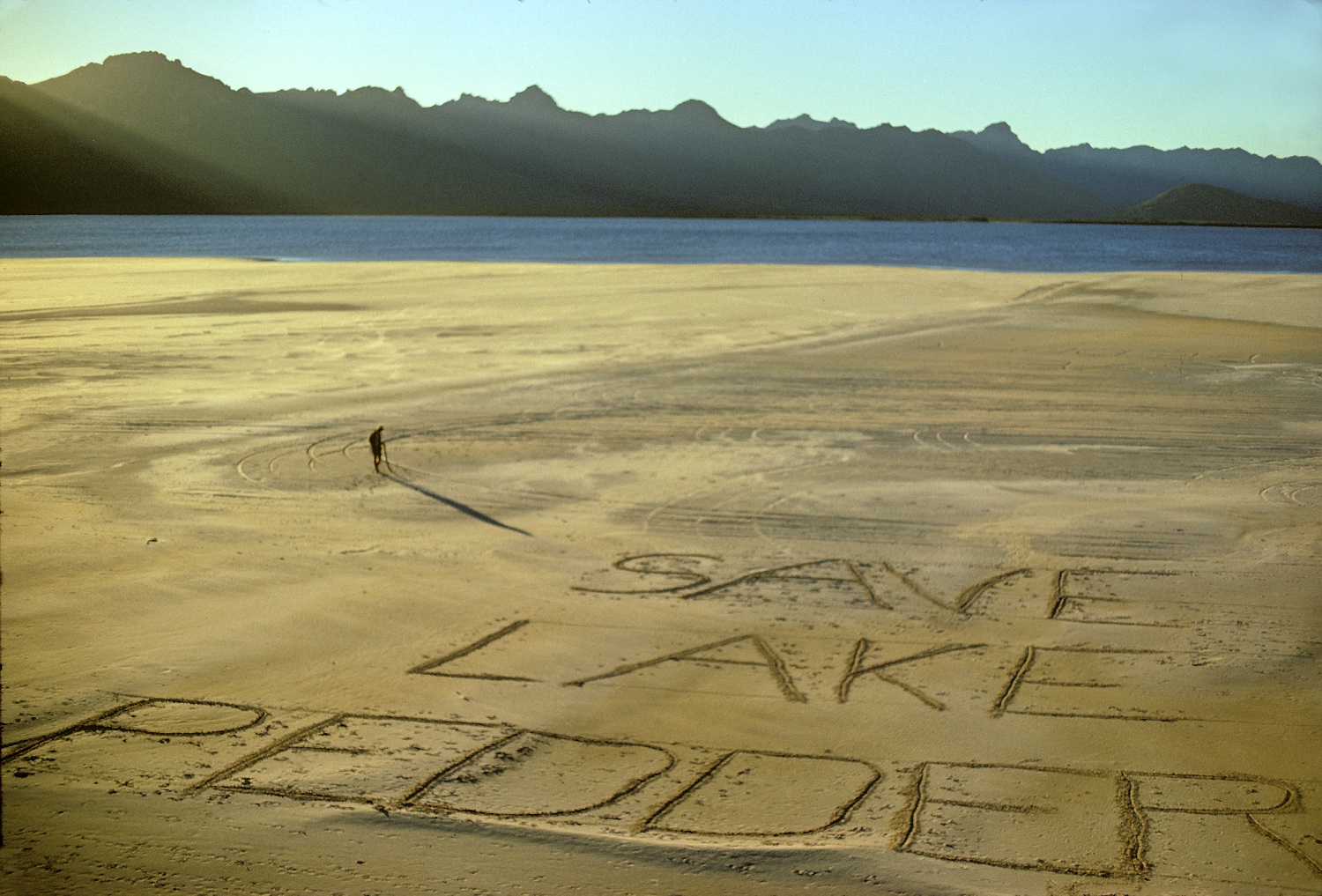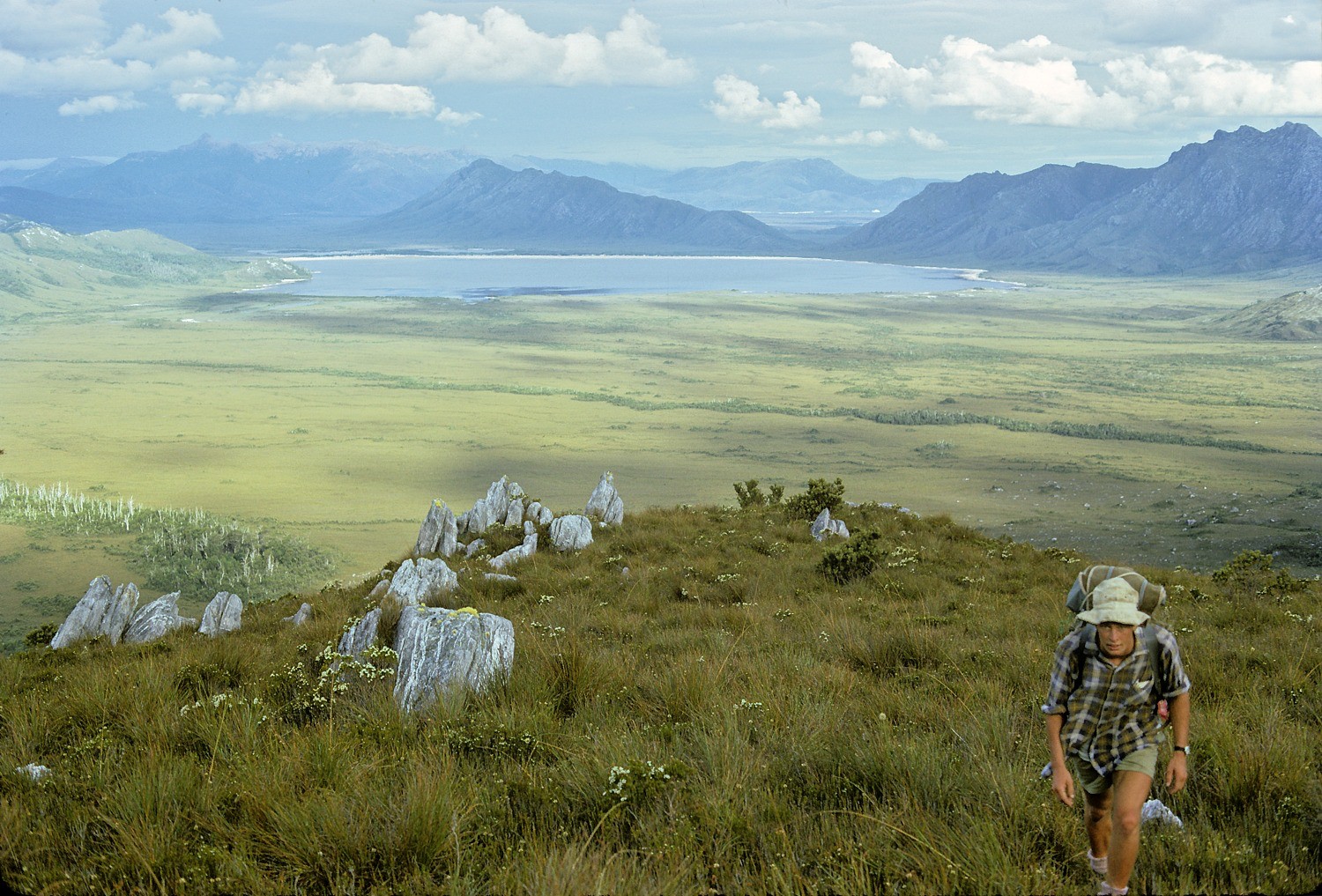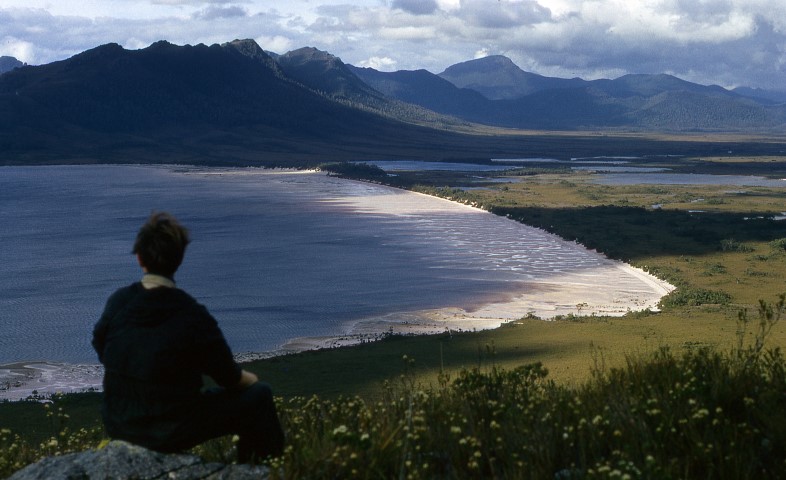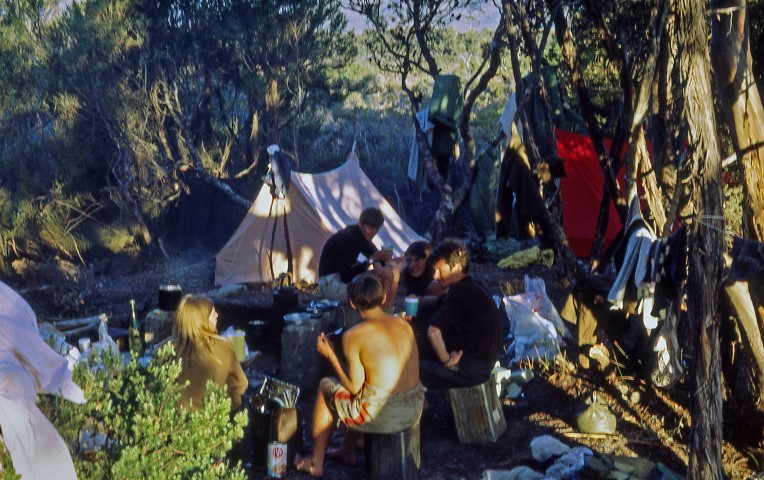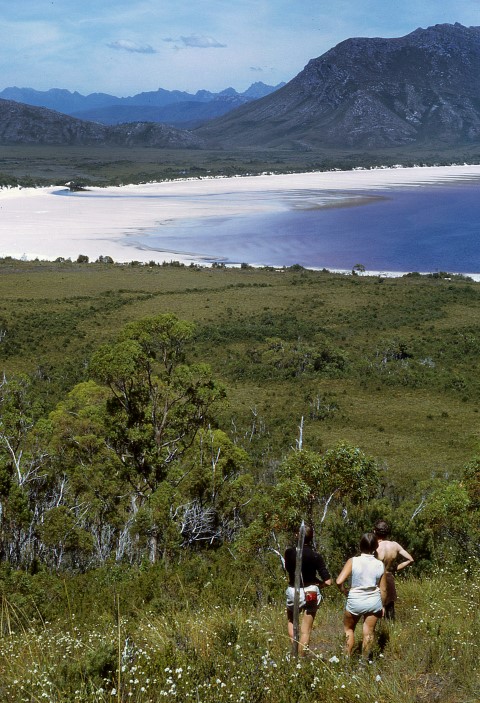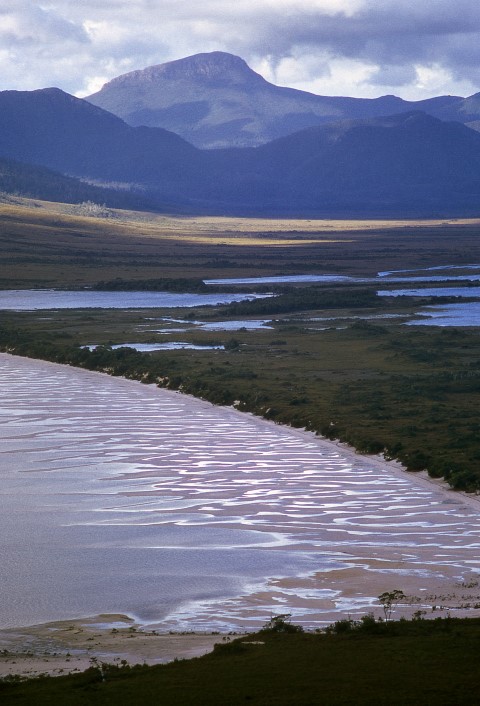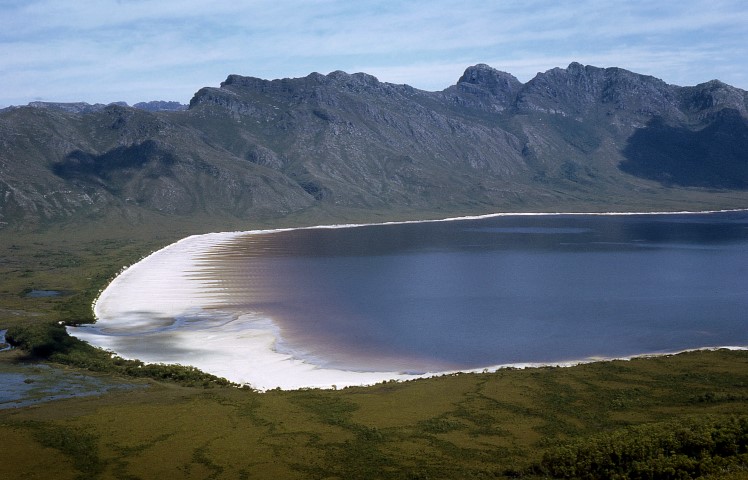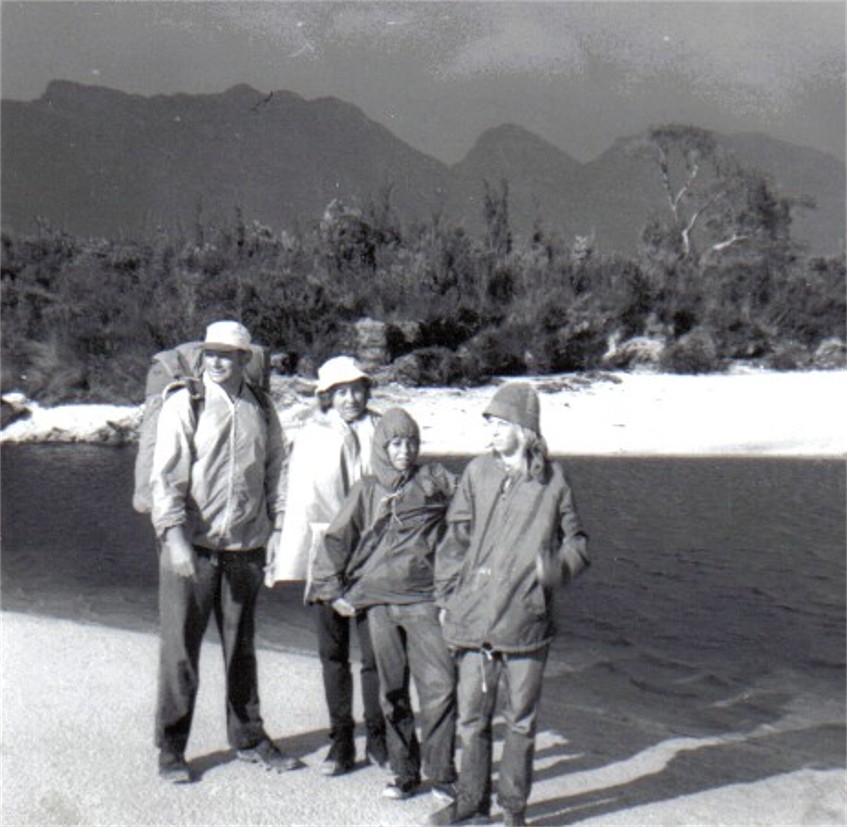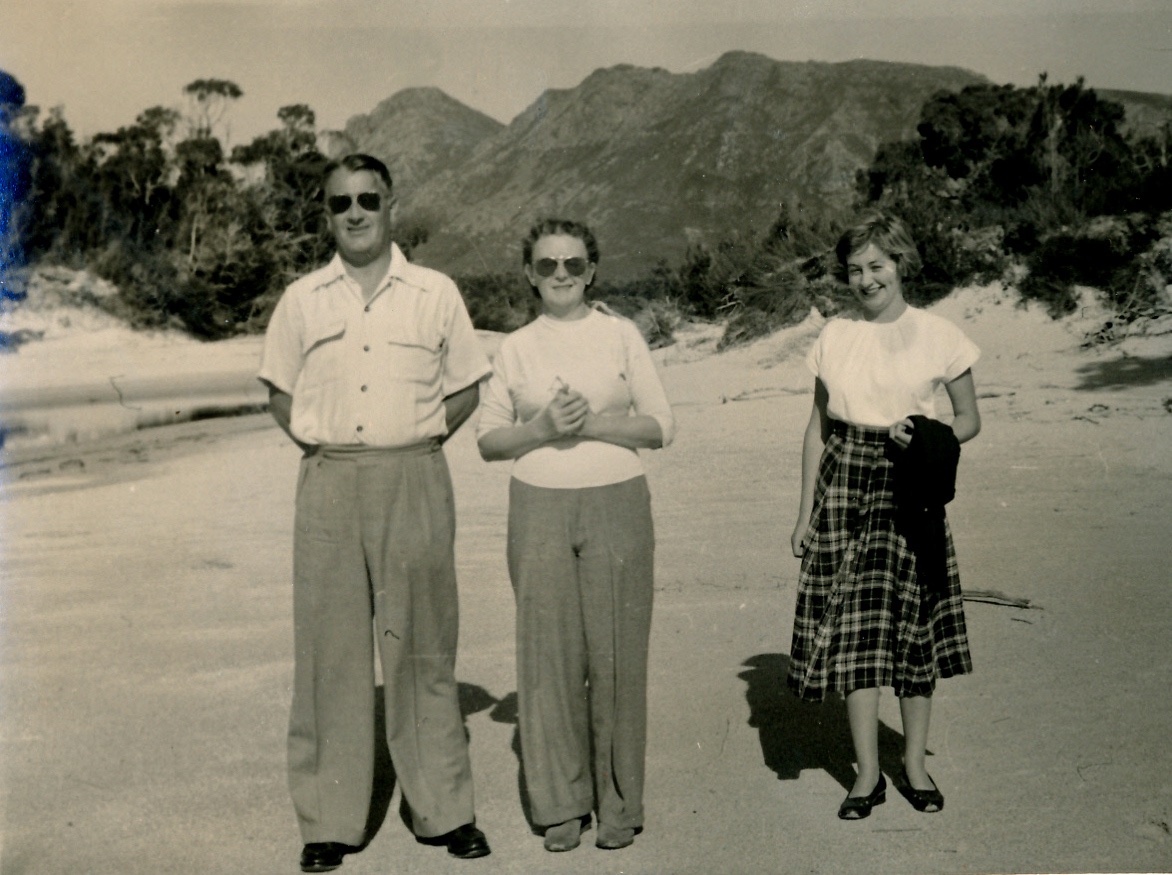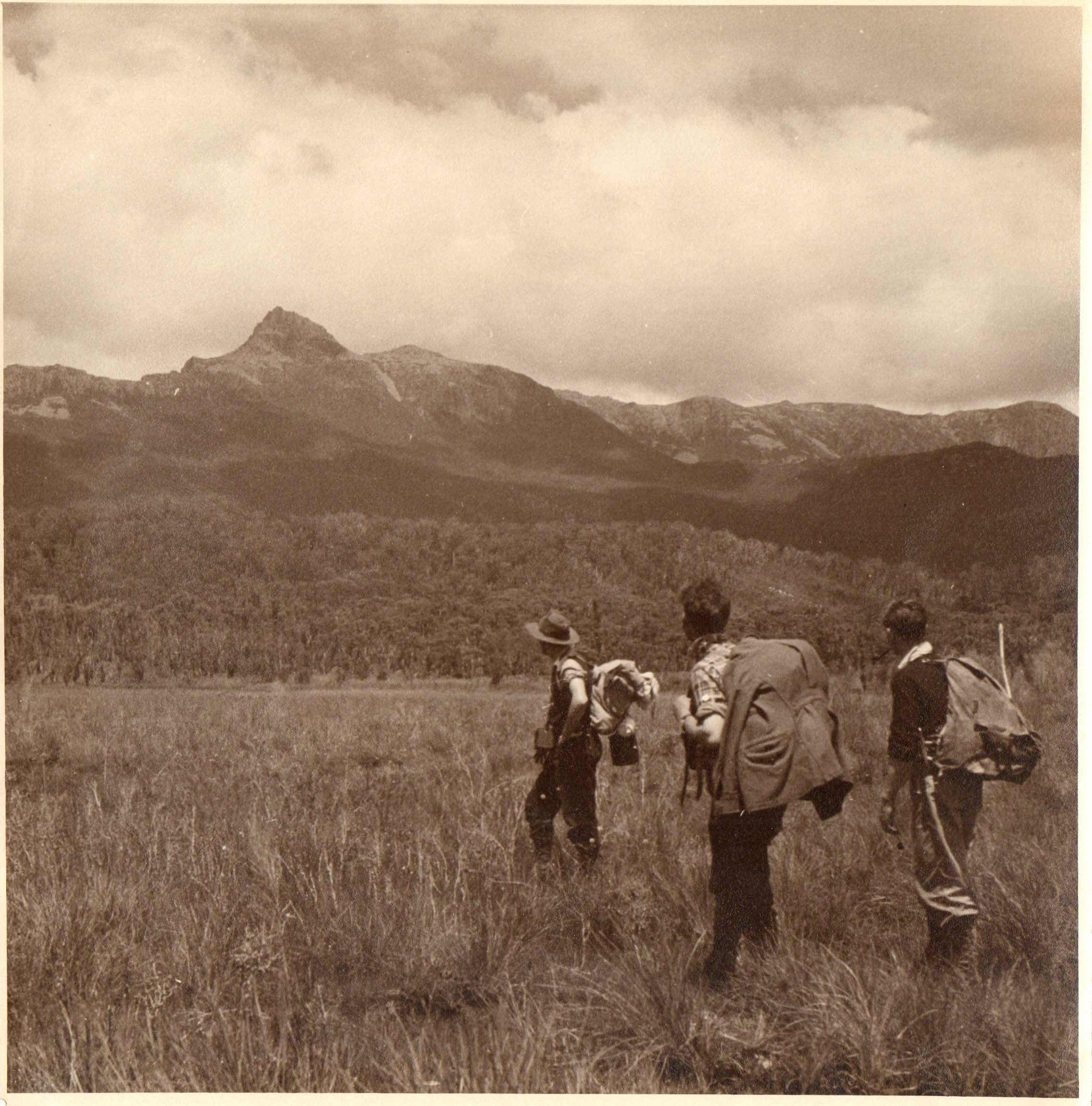Lake Pedder was a mecca for bushwalkers, campers, and other outdoor activities. Explore some of the stories and images from past visitors to the region. If you’d like to contribute your story, click here to download the guidelines.

“Maybe fate has it that my likely last trip into Lake Pedder should be horrible. Maybe this will prevent me from thinking longingly about it, but I had to see it one more time.”
SOLO PILGRIMAGE TO LAKE PEDDER, 1972
By Winston Nikols

The Election Fight for Lake Pedder (March-April 1972) by Roy Pallett
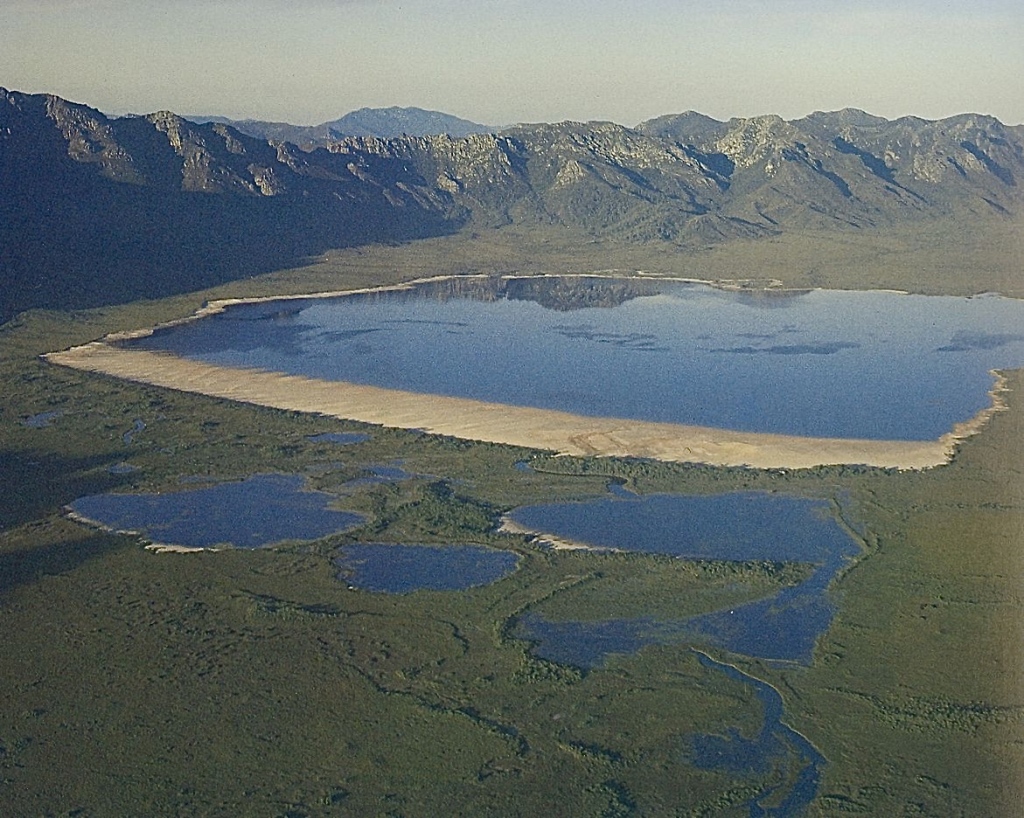
Remembering Elspeth Hope-Johnstone
Bushwalker, Artist and Educator
Elspeth has also contributed the following images:
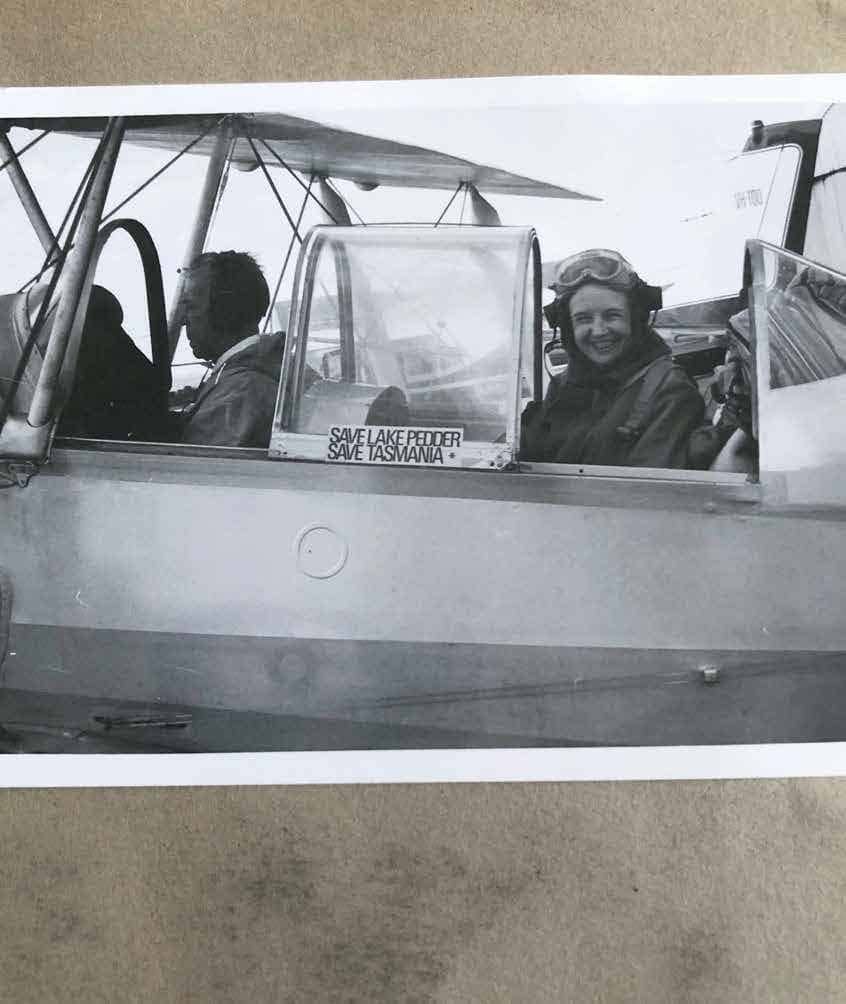
‘Vigil Communication Conundrum‘ by Dick Friend

‘Paddle for Pedder Weekend’ by Lindsay Hope
Sue and Lindsay Hope

Sue and Lindsay were members of the Launceston Walking Club from 1967-72. They fought alongside thousands of other Australians and world-citizens / scientists to try to save the lake from inundation. Read more about Lindsay’s story here and Sue’s story here.
Bill Tomsett
Story contributed by daughter Janette Asche, Queensland
My Dad, Bill Tomsett, was a member of the YMCA Ramblers in Sydney. He went to Tassie in December 1953 with Frank Carrick and John Cotter. On the track they met YM and Rover Ramblers Club members, Ross Webb and Ken Stewart, who couldn’t get to Lake Pedder due to the high river level—but Bill, Frank and John were able to continue to Lake Pedder and climb Mt Anne on the way. It was a once in a life-time experience for them all.
Bill also maintained a diary during this trip. A fascinating, hand-sketched Department of Mines map was used.
Dennis Garrett, NSW:
Dennis visited Lake Pedder on two occasions. First, in December 1969, a party from the Kamerukan Bushwalking Club stayed overnight at Lake Pedder, en route to a traverse of the Western and Eastern Arthurs. Secondly, in December 1970, a small party of bushwalking friends made a flying visit to Lake Pedder.
All shots were taken on Kodachome II (25 ISO) with a Pentax Spotmatic and scanned with a Nikon Coolscan 500ED 35mm film scanner. Some of these transparencies were difficult to scan, because, fashionably, they were (under)exposed at 32 ISO, which in the 1960s and 1970s made for rich colours suitable for the slide projector.
Don Weston, Vic
Don writes of two trips into Lake Pedder;
‘Here are some notes on our 1968 trip to Pedder. We left Cockle Creek on 4 February 1968 and walked along the South Coast track. It had been recut by Milford Fletcher the year before. Again we had a fair bit of bad weather, walking through both rain and hail until we reached Dennis King’s shelter hut at Melaleuca Inlet. We had an air drop there and spent several days with Dennis and his two girls. Unfortunately I got so relaxed that I didn’t write my diary for a couple of weeks!
When it was time to go, Dennis took us to the start of the Pedder track on his ketch, the Melaleuca. On the way, we climbed into the Western Arthurs then reached Pedder probably around 15 February. At last the weather was fine and we spent several days there. Olegas Truchanas was camping there with a stack of poets. We climbed into the Coronets for a view of Pedder.
When we left, we headed east and climbed Mount Anne, then came back to Junction Creek and headed off into the Eastern Arthurs and Federation Peak.’
‘The second trip was at the end of 1971. We had intended to cross the Wilmot and the Frankland ranges but were driven out by terrible weather. We got to Pedder on 30 December 1971. The weather was still appalling. I took the photos on 31 December and then we packed up and headed south.’
John Anderson, Tas
After reading the article on Lake Pedder in ‘The Mercury’ on 14 May 2016 it brought back some old memories. You may be interested in my trips to the lake and some old photographs taken 66 years ago. I’m now 84 yrs old.
I think it was 1950 when my late brother Don Anderson organised a trip to climb Mt Anne.
There was four of us in the group: leader Don Anderson; Brian Worladge; Victor Dawes; and myself.
The Aero Club of Southern Tas (pilots Nick and Peter Tanner ) flew us in two Auster Arrows to land on the beautiful beach at Pedder. We headed across the button grass plains, past Mt Solitary,climbed up to the Mt Eliza plateau,and then on to the summit of Mt Anne.
The view down to Lake Judd was breathtaking. We went on to Lot and Lots Wife. I cannot remember our exact return but we linked up with the Port Davey track and walked out to Kallista on then on to Maydena.
I think the trip lasted five days, and I do still have horrid memories of being attacked by leeches in a camp near the upper reaches of the Huon River.
It was also about this time when my girlfriend Margaret Livingston worked at the Aero Club and she was lucky enough to get a flight into Lake Pedder, when the Chief Pilot Lloyd Jones took in Athol Townley and his wife. Athol Townley was later a minister in the Menzies cabinet until his death in 1963.
Margaret recalls being told that the first landing on Pedder beach was made by Lloyd Jones accompanied by engineer Alan Hume in a Tiger Moth in the late 1940’s. They had to take an extra can of fuel to make the trip.
Margaret and I were married in 1954 and in 1972 before the flooding of Pedder—together with our three children Scott, Lee and Paul—we crossed the Sentinels to visit the lake again.
This was a difficult time for me as I was employed by the HEC as an engineer in the Distribution Branch. Best of luck with your restoration efforts.
ACST pilots, 2008
Aero Club of Southern Tasmania (ACST) pilots reminisce about Lake Pedder and their role in flying people to and from it (length: 5:15).
Jim and Una Brown, 1955
Lake Pedder National Park. Tasmanian Tramp, Journal of the Hobart Walking Club, No. 12 – December 1955.
The latest addition to Tasmania’s 900 square miles of Parks and Reserves is recently gazetted Lake Pedder National Park, 92 square miles of grand lake and mountain scenery 60 miles air-line west of Hobart – 3 days’ walking from Maydena.
As a base camp the lake is ideal. There is something for everyone who loves the outdoors – the mountaineer, the botanist, the geologist, the artist. Although there is no big timber round the lake, camp sites are plentiful in the shelter of the tea tree and banksias overlooking the beach, and command the magnificent sweep of the Frankland Range to the south and south-west, and the regal peak of Mt Anne to the east. Here are splendid opportunities to study the flora and fauna, to climb and explore the hills and peaks, to examine the fantastically folded quartz mica schist formations of the Frankland Range.
The lovely and diverse flora of the South-West blooms nowhere more brightly and profusely than on the extensive button grass plains, the wooded hills and the peaks of the Lake Pedder National Park. From November to the end of January the plains are a kaleidoscope of colour – the delicate pink of swamp heath, cream and mauve melaleuca, the guinea-gold of ground hugging hibbertias, pale blue iris, the flamboyant scarlet and orange-hued blandfordia lily, and over all, a pungent perfume which recalls the South-West so vividly to all walkers – the lemon-scented thyme, a species of boronia.
Header Photo Credit : Dennis Garrett
